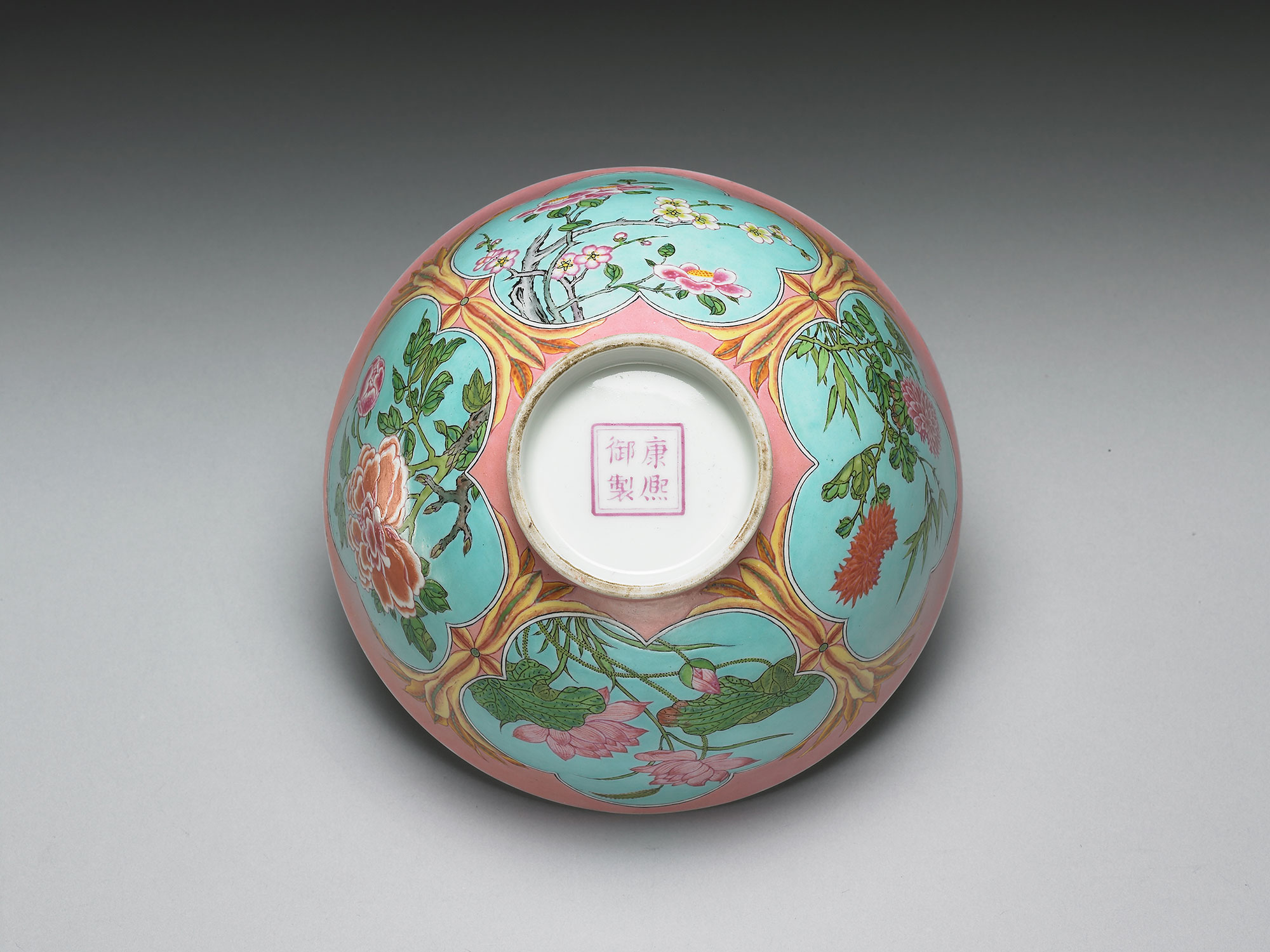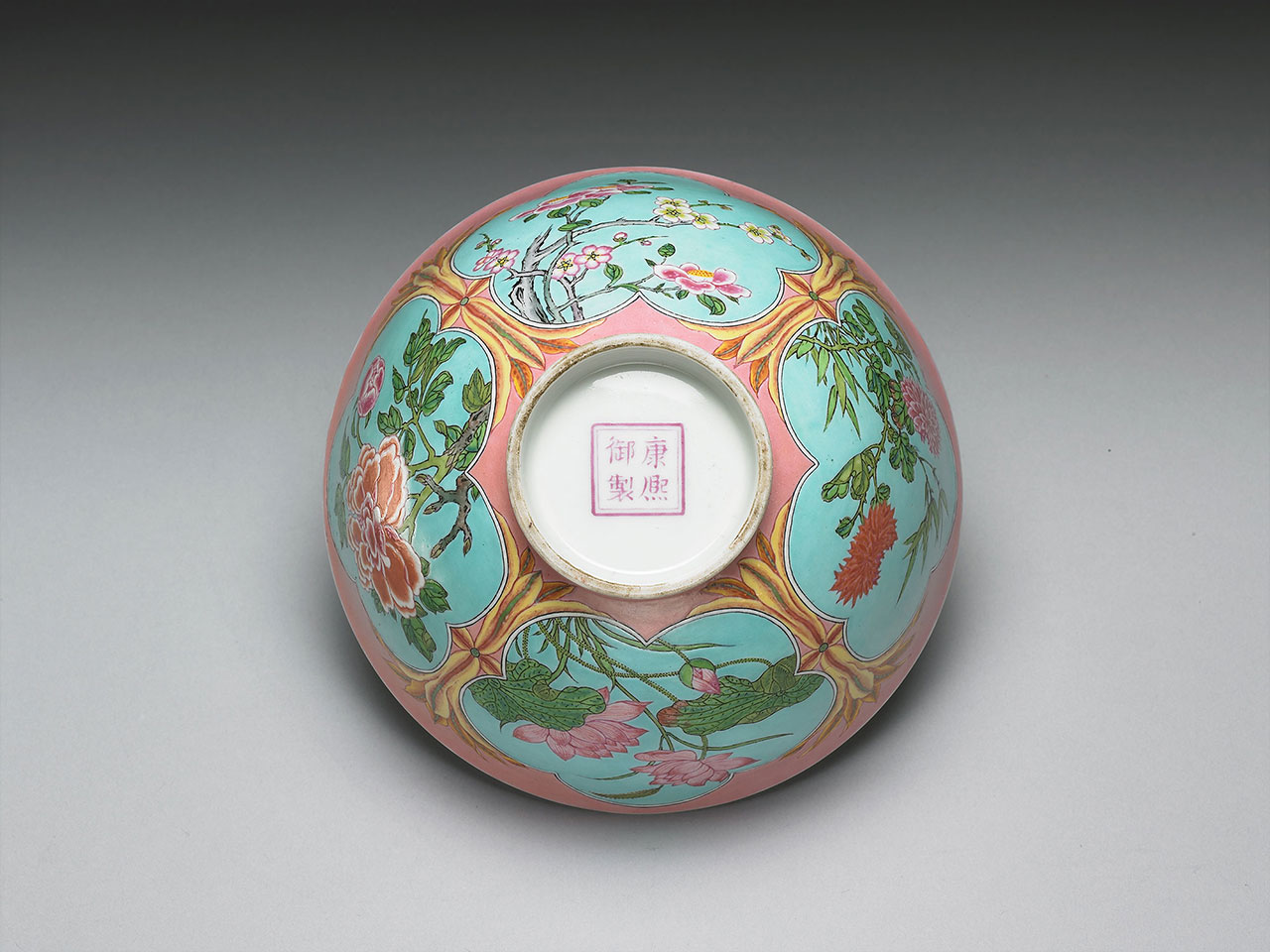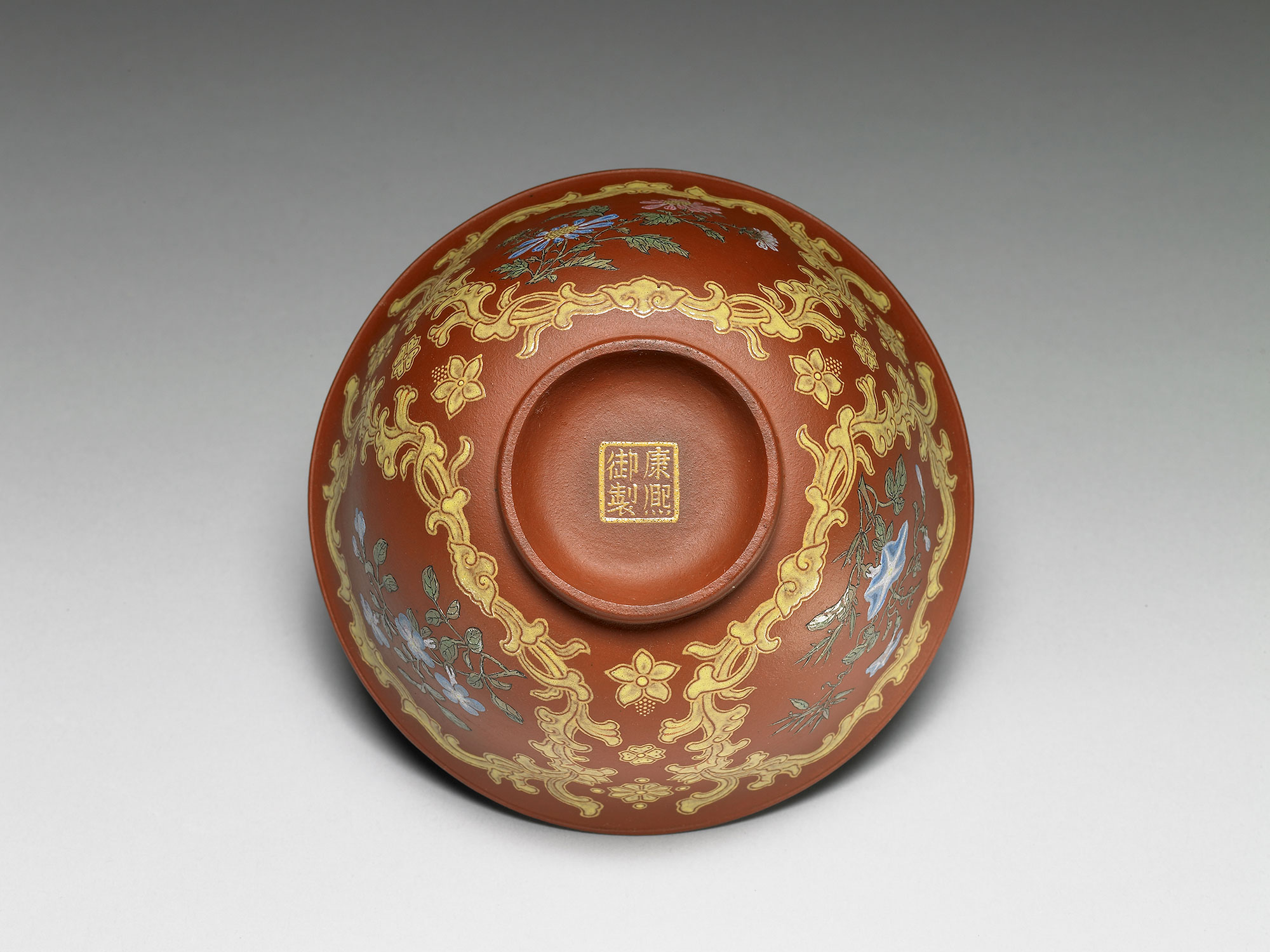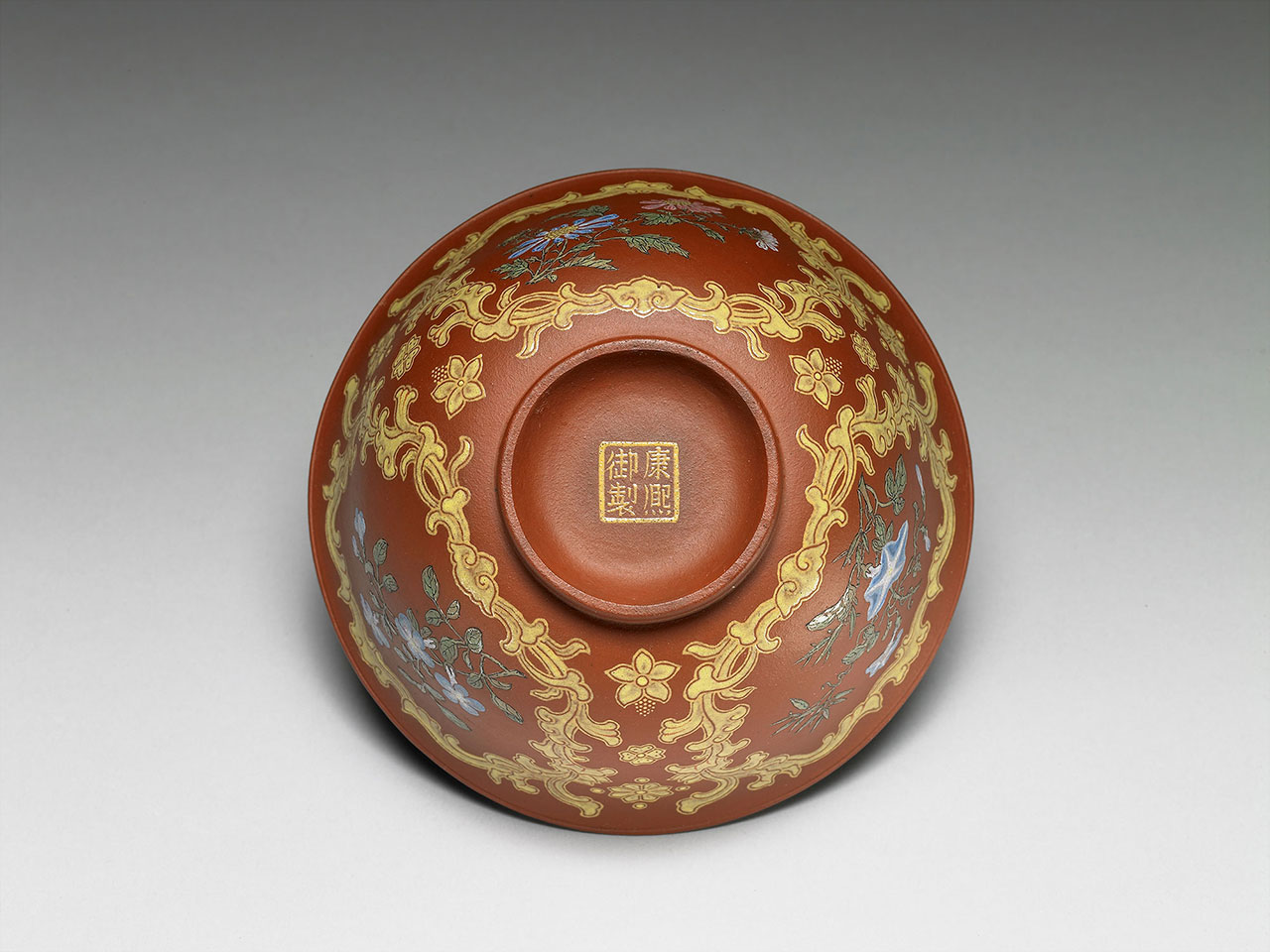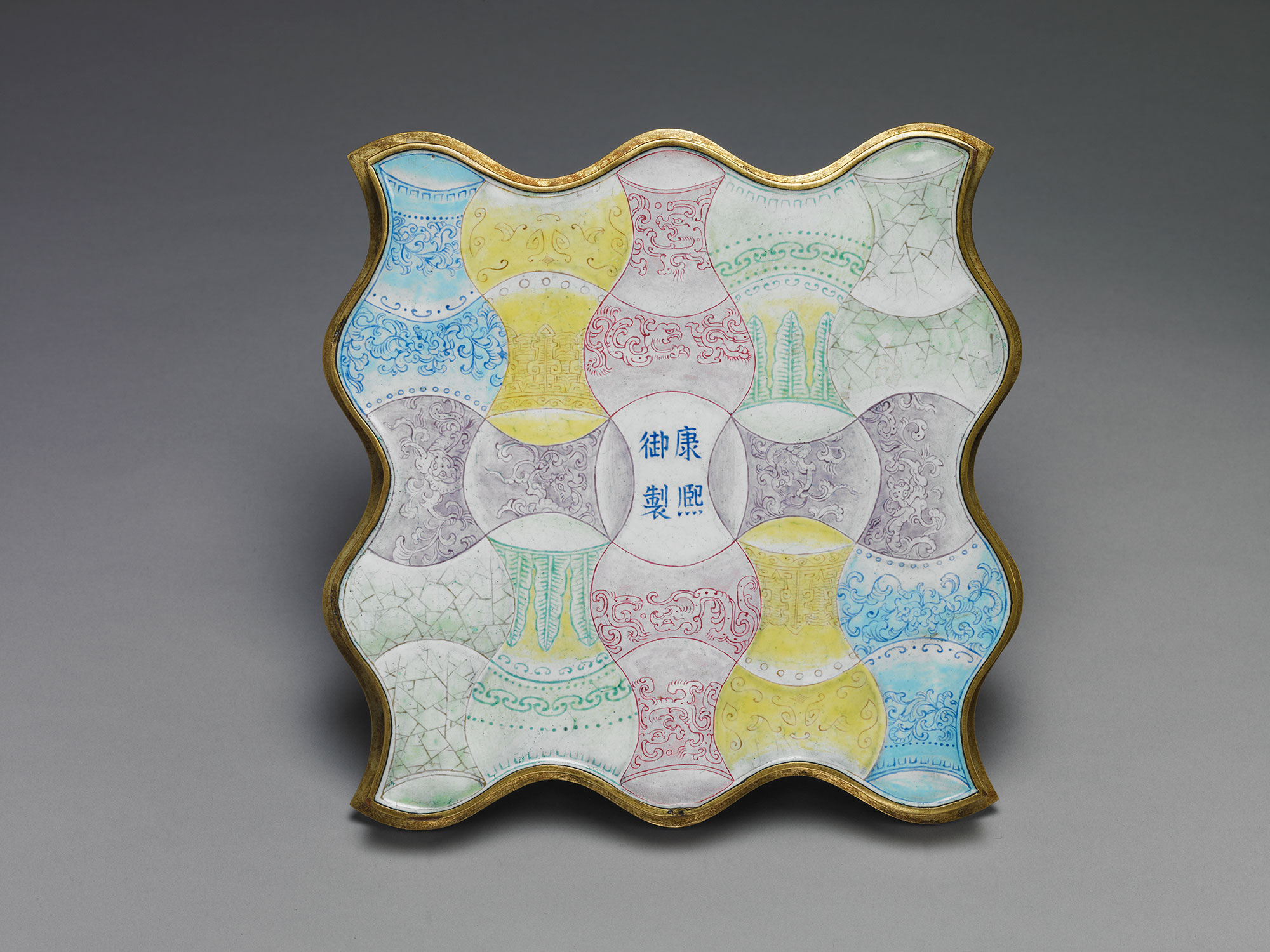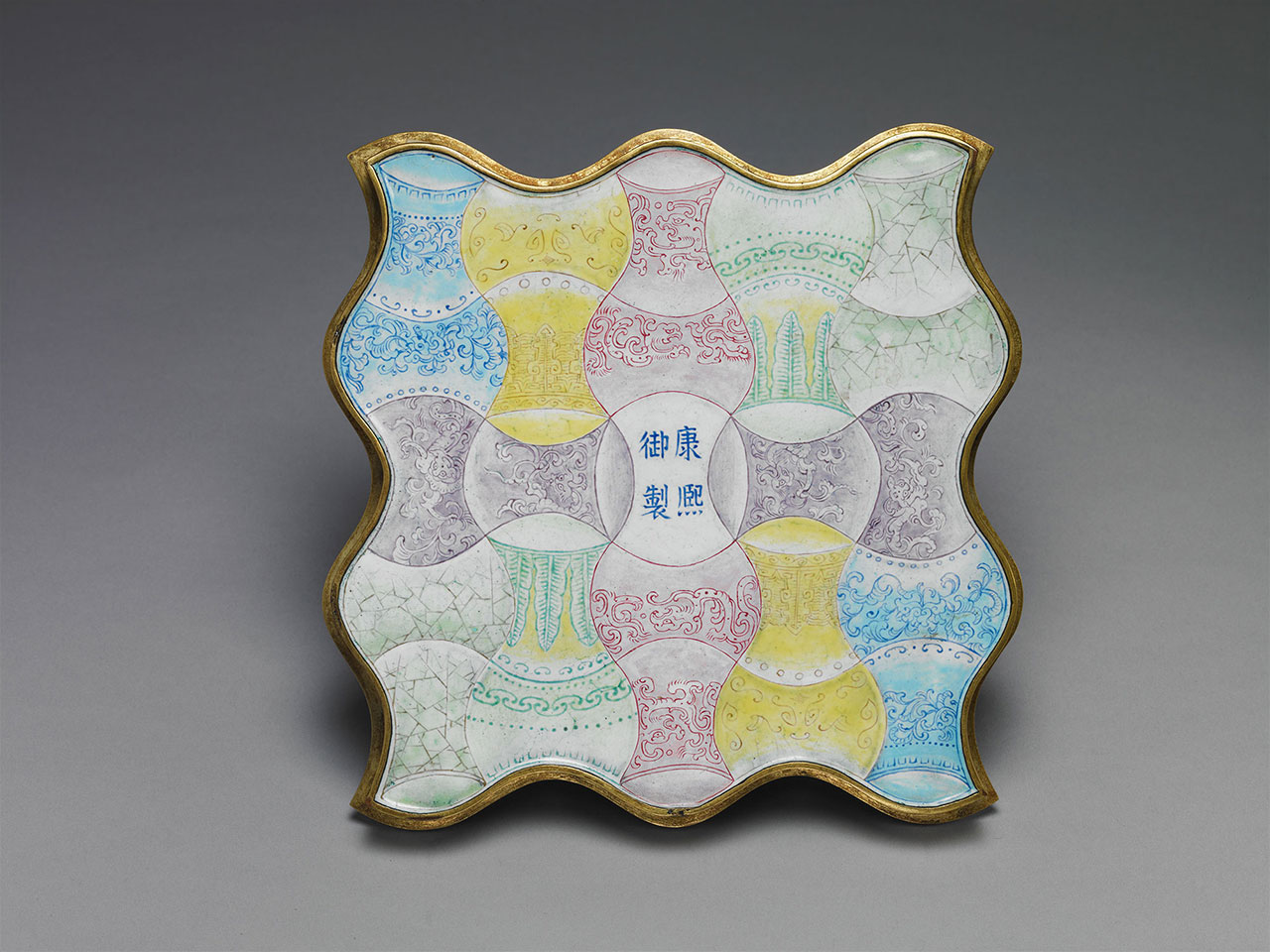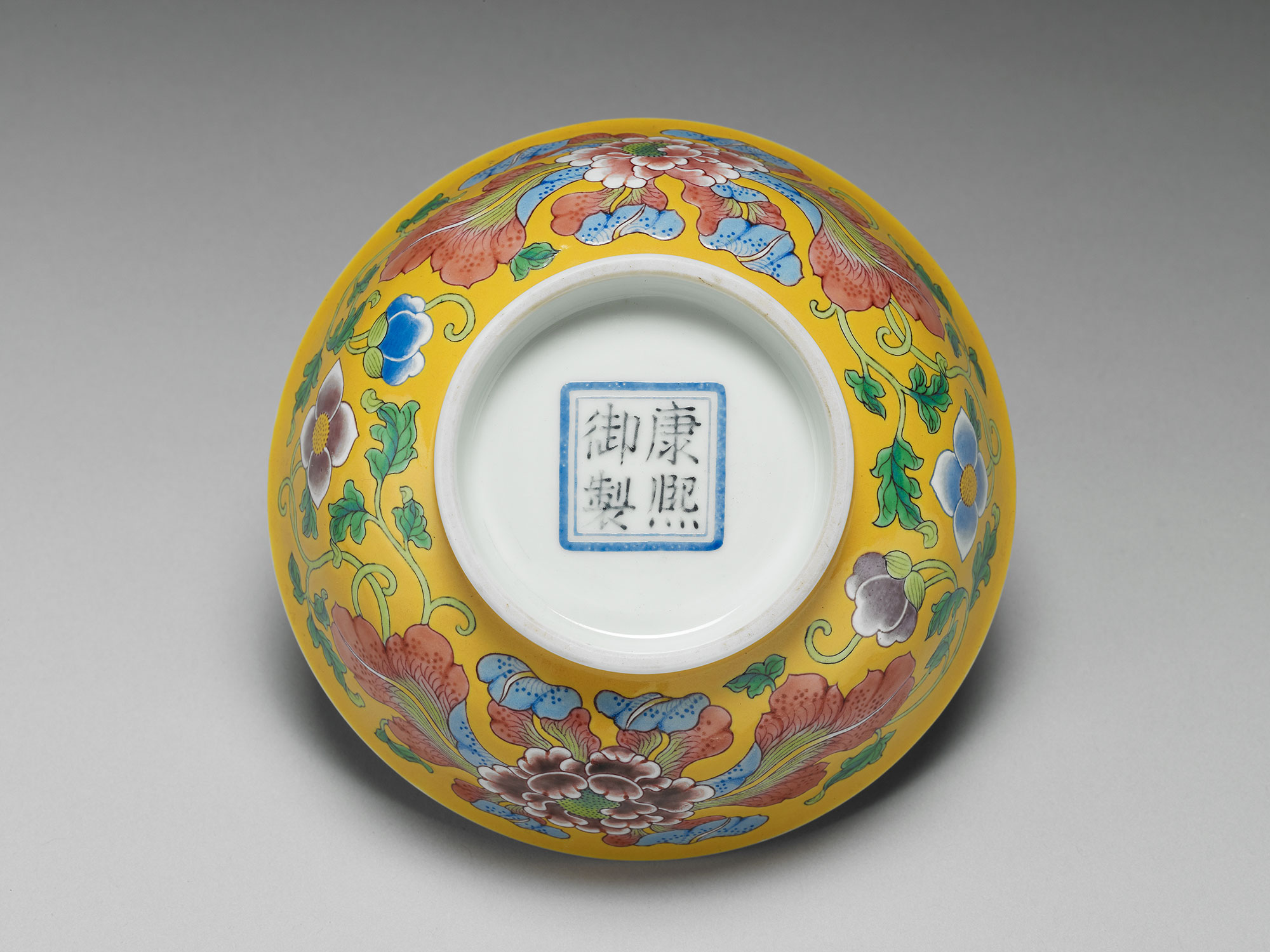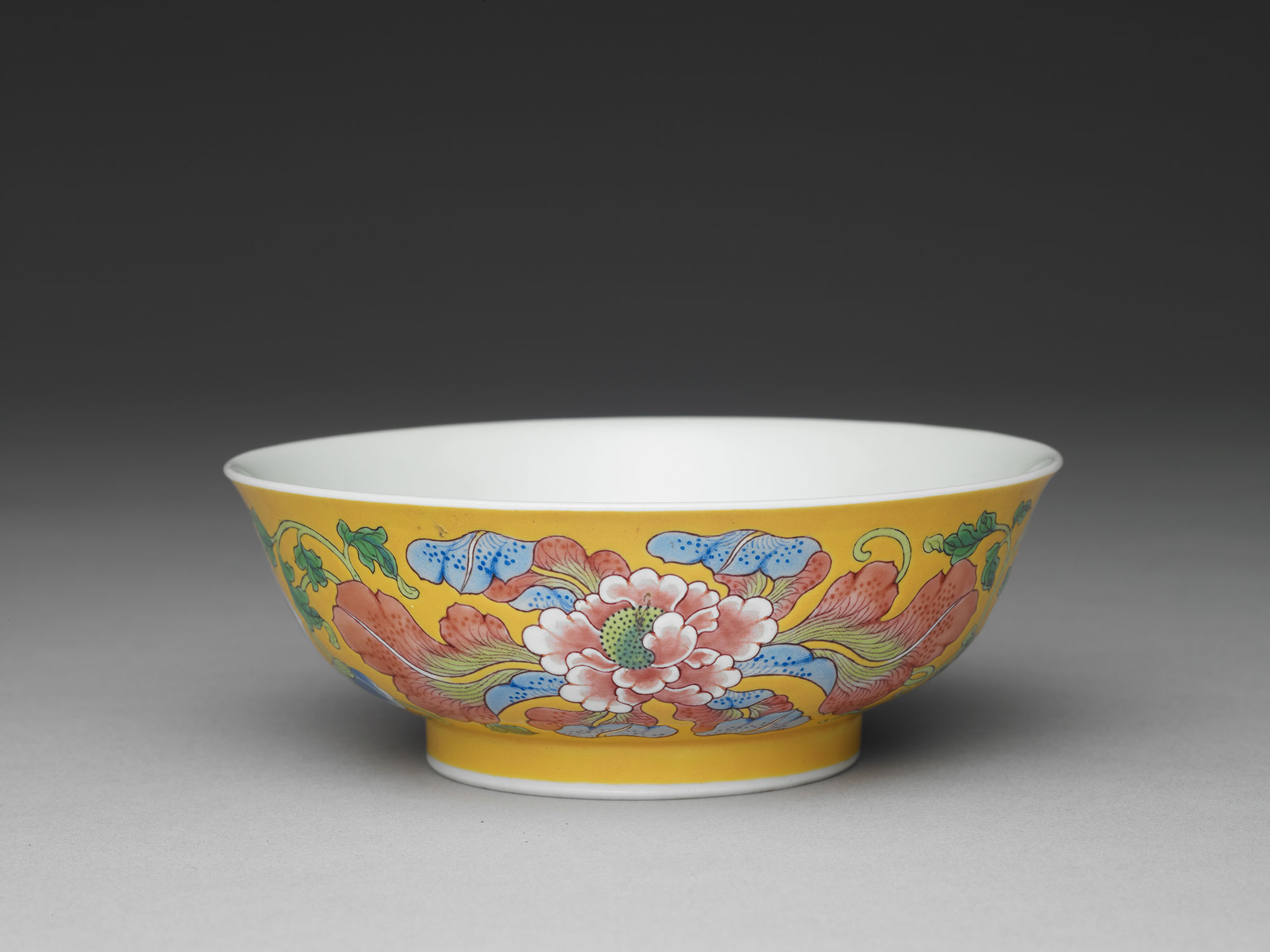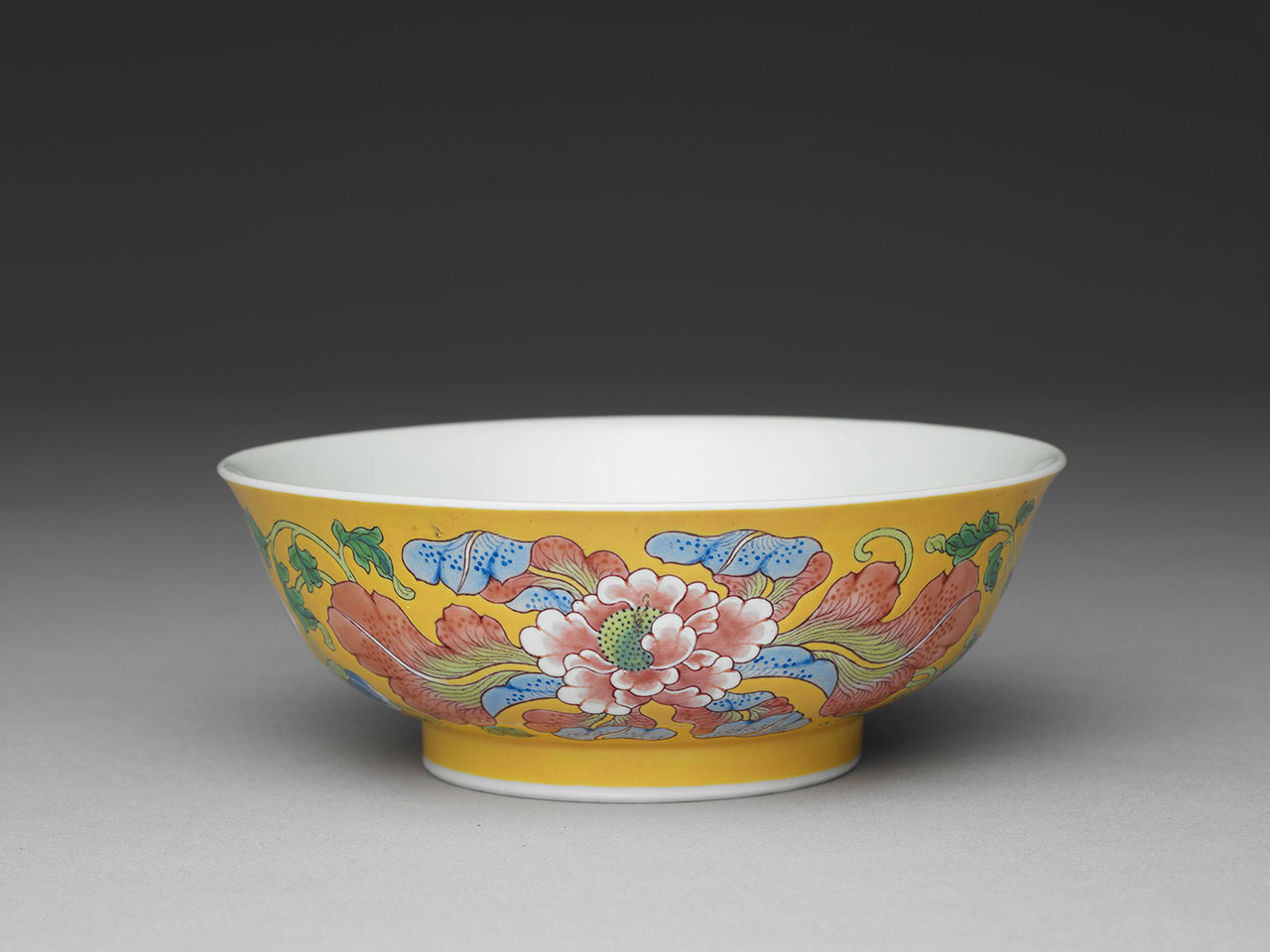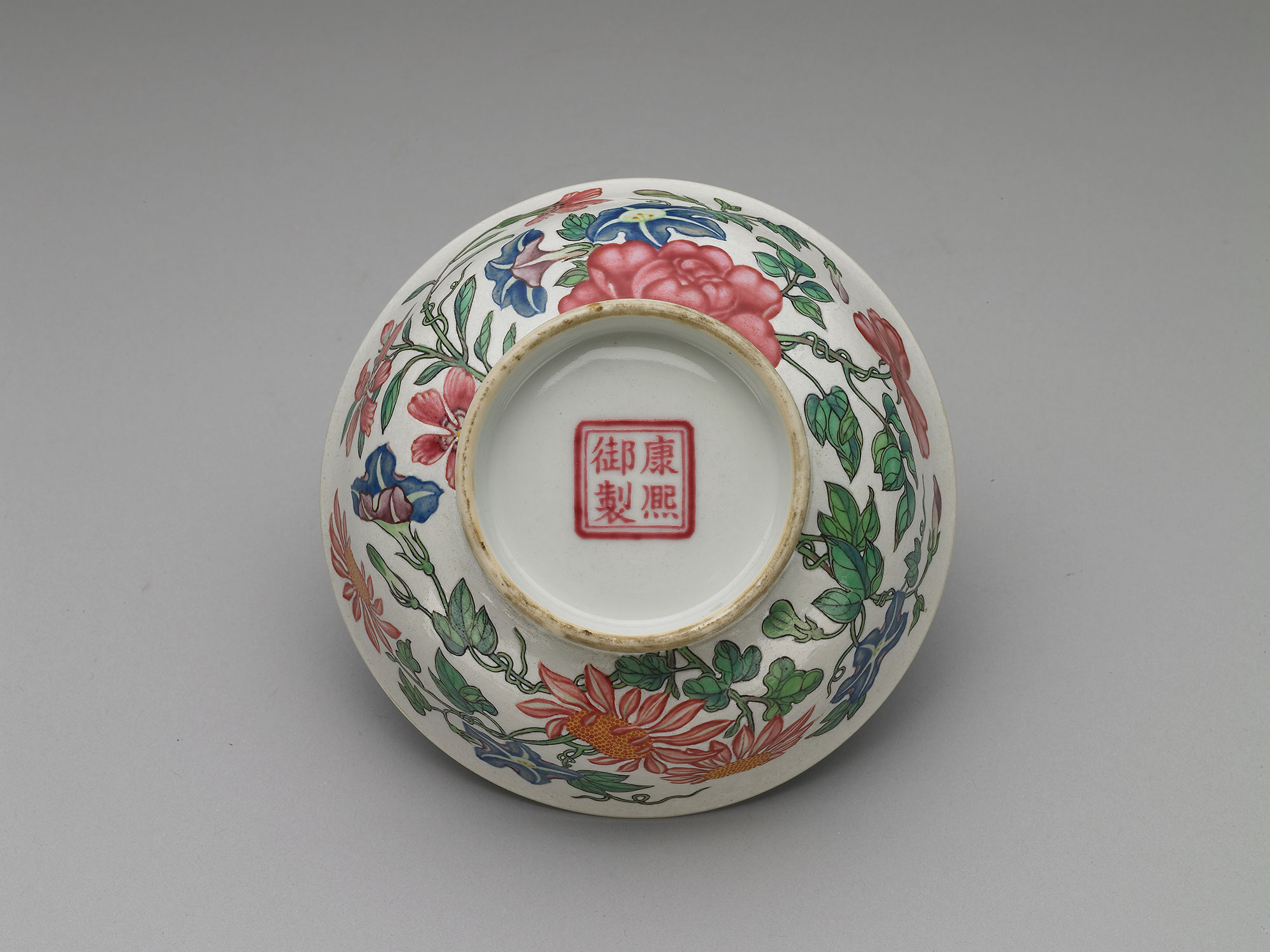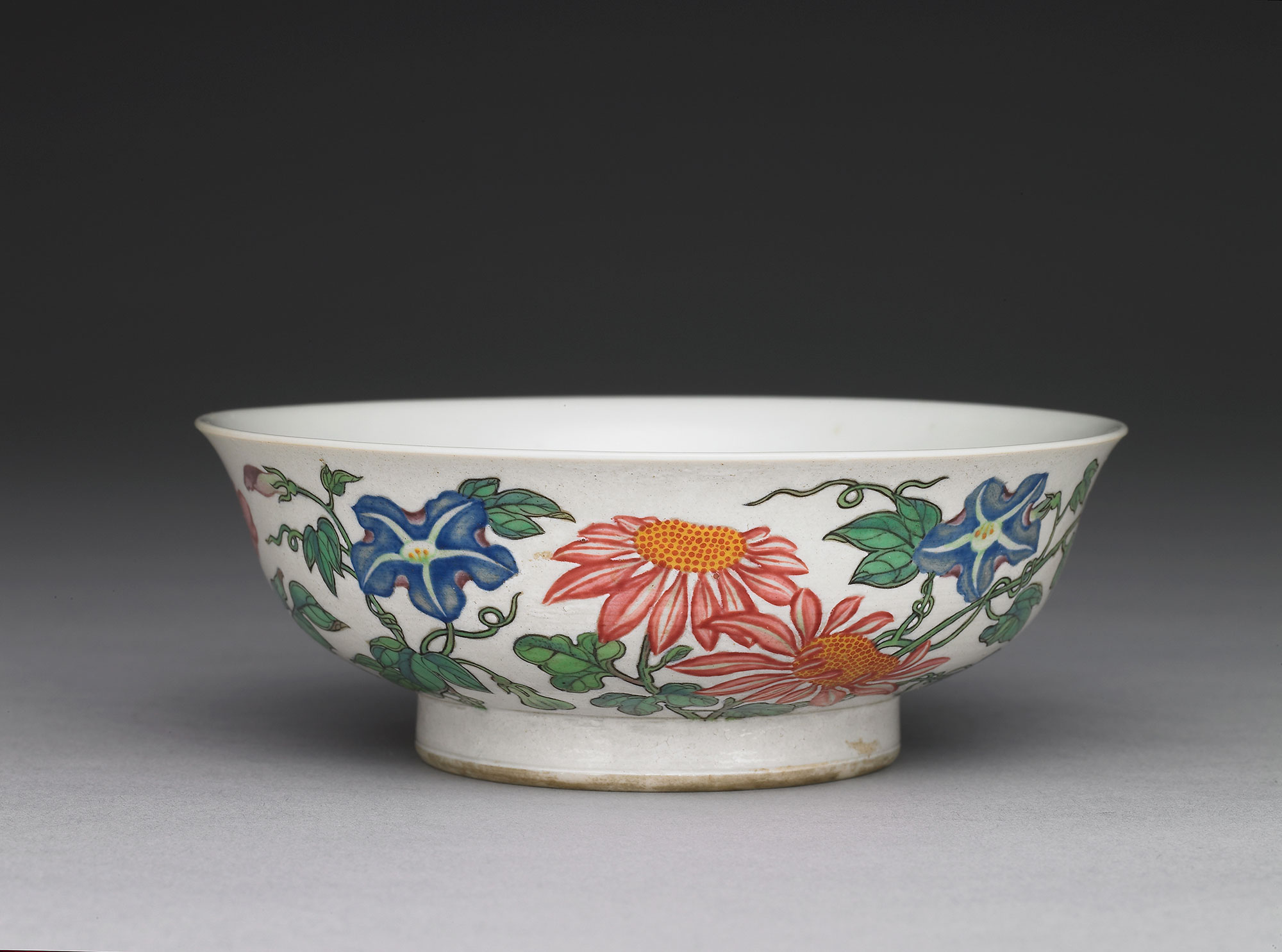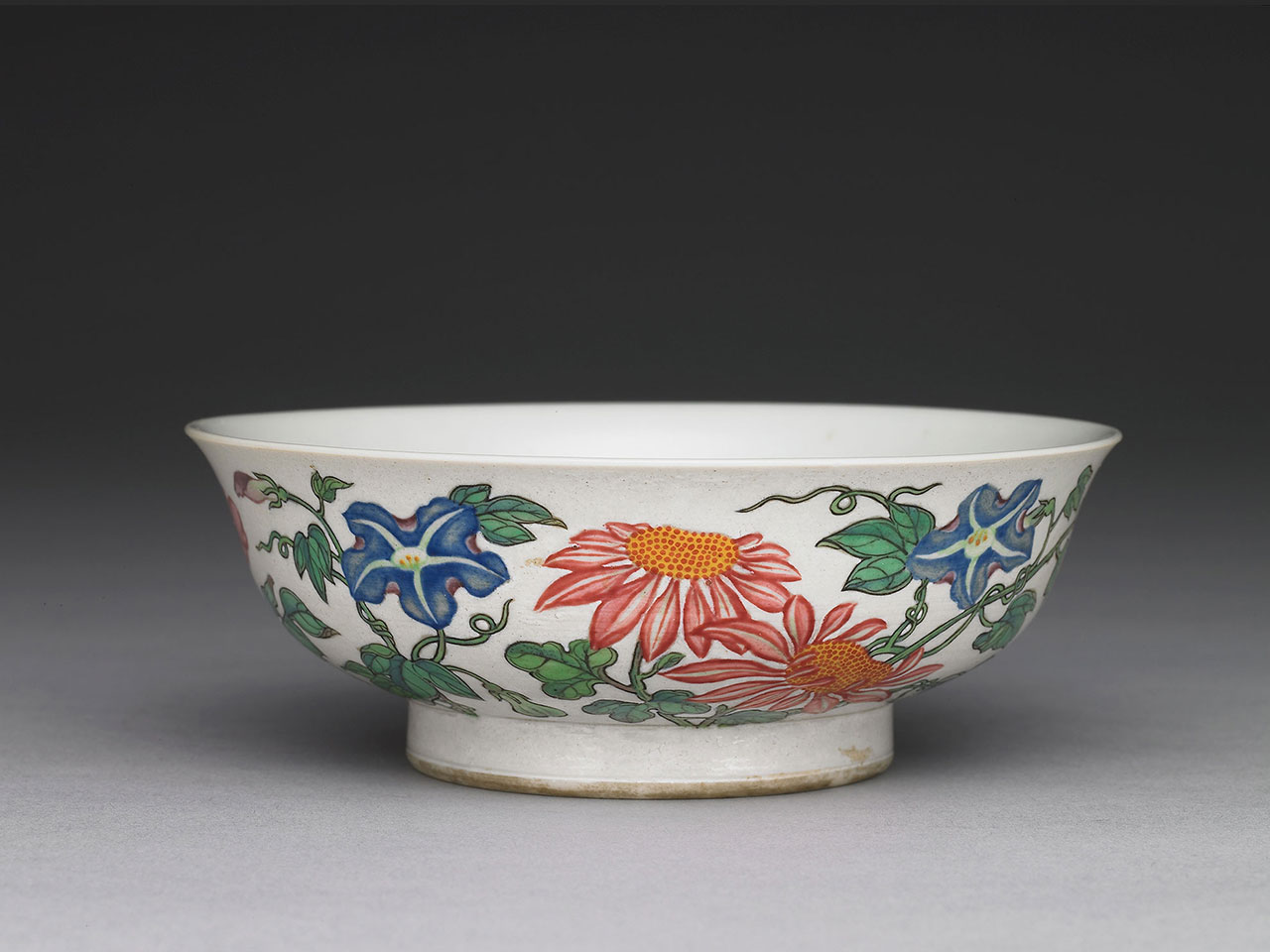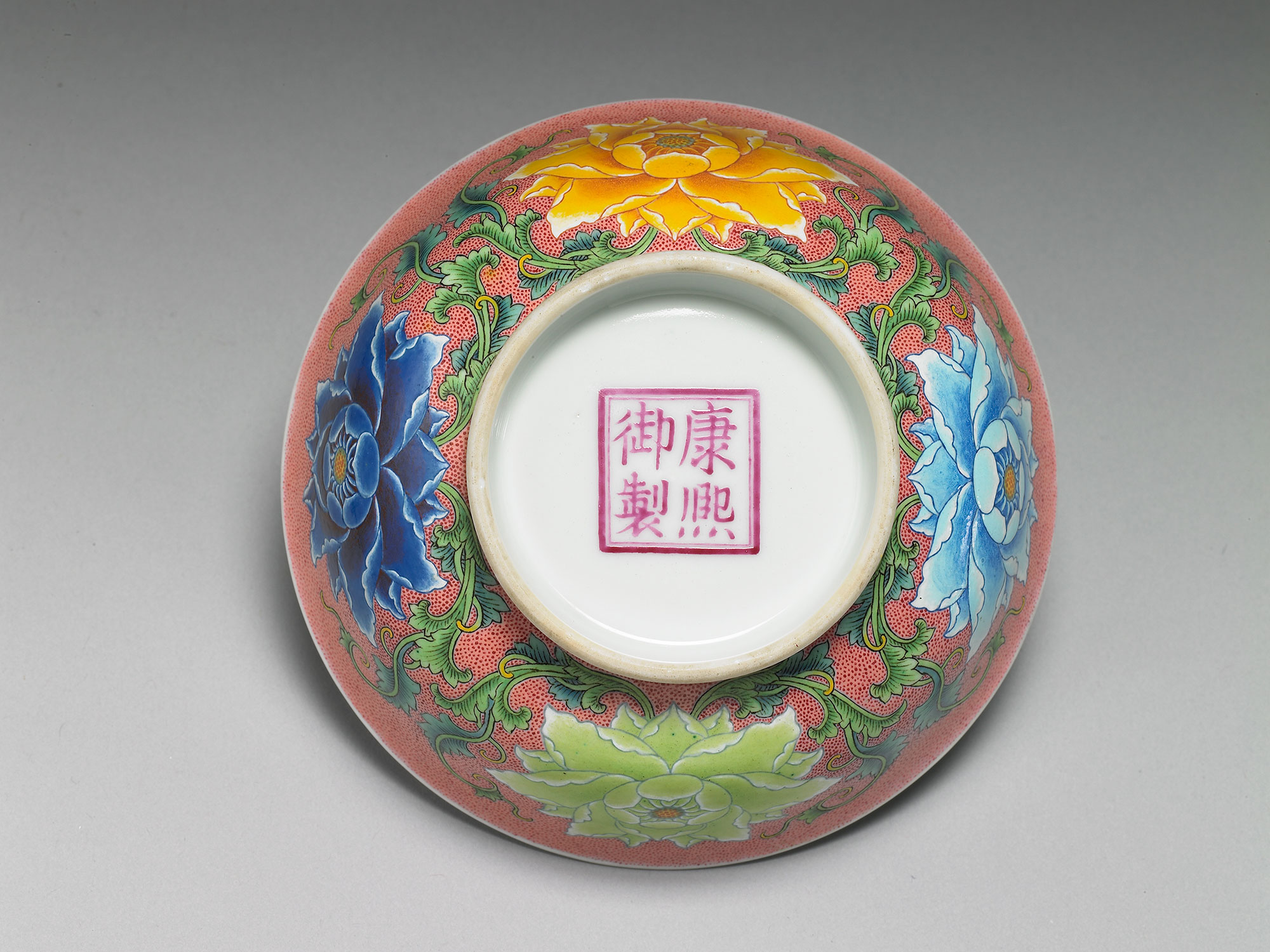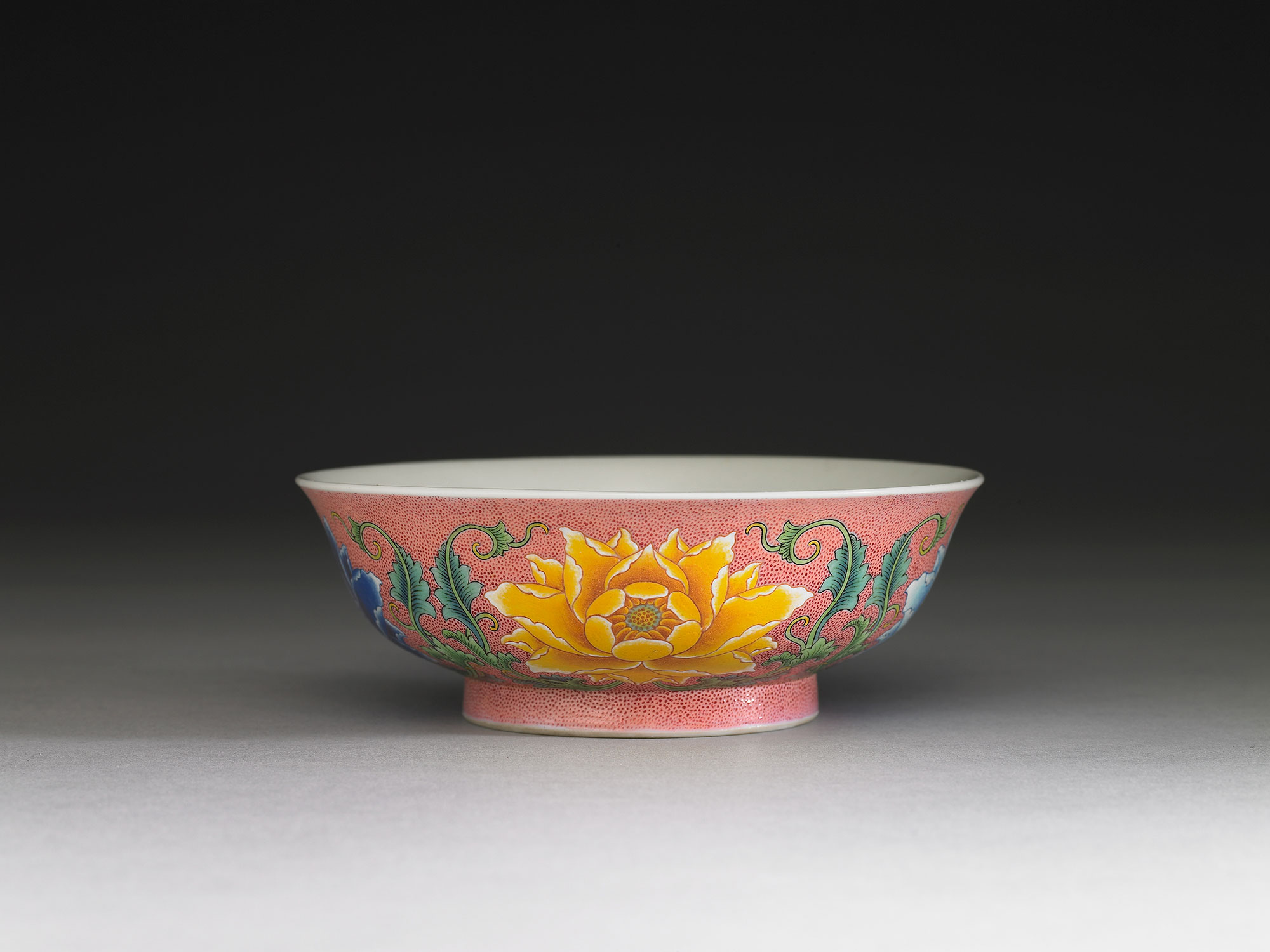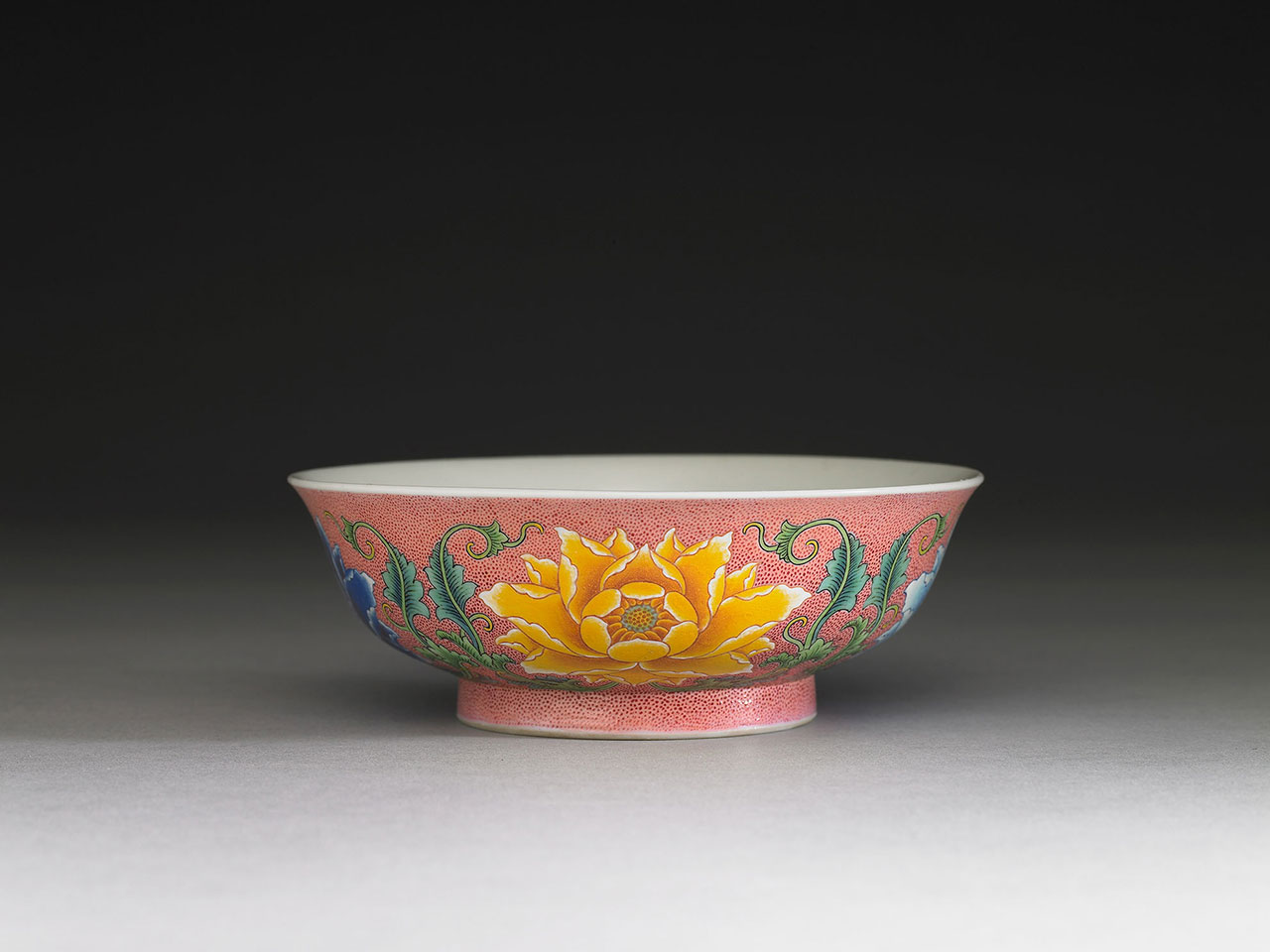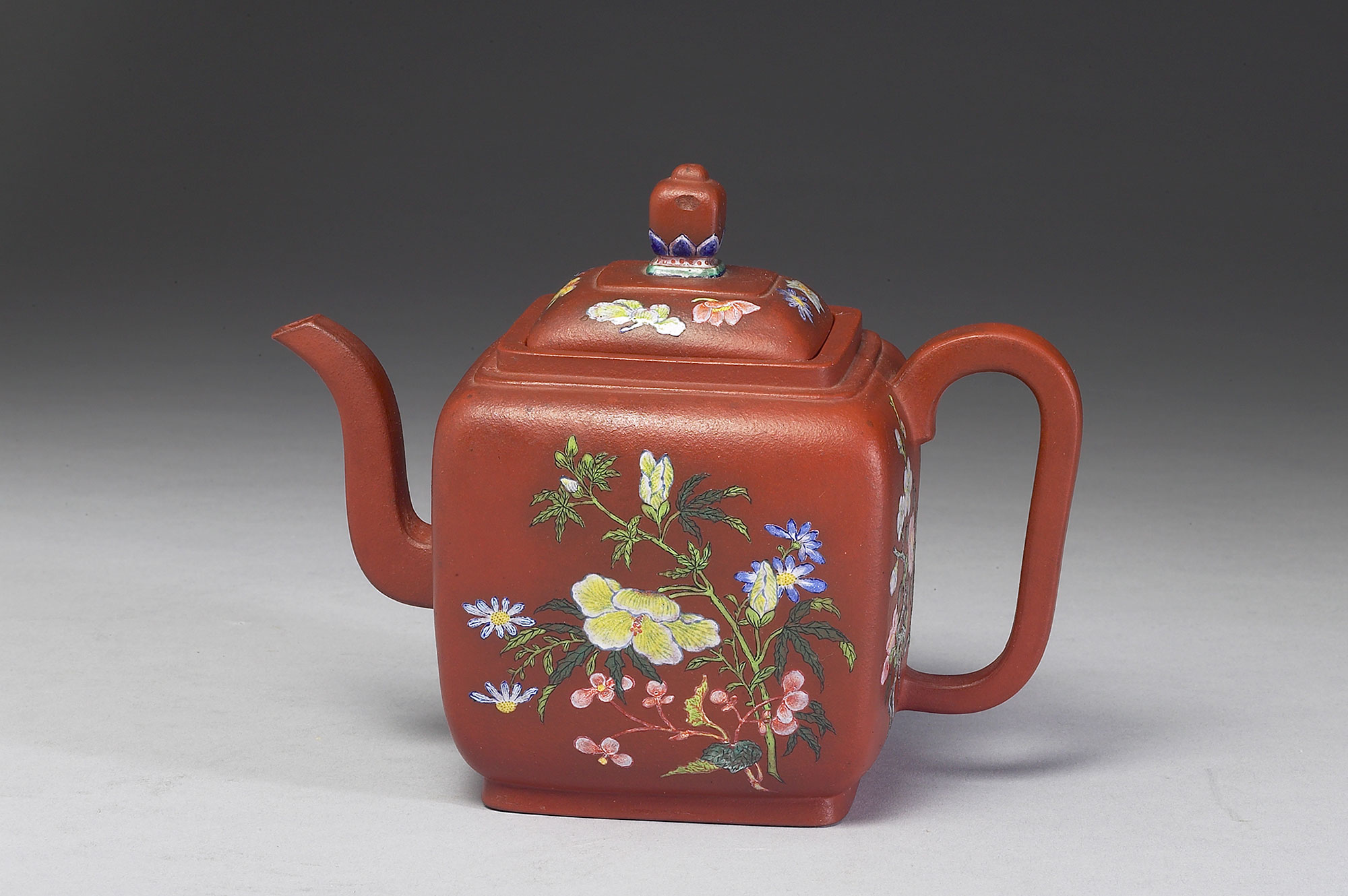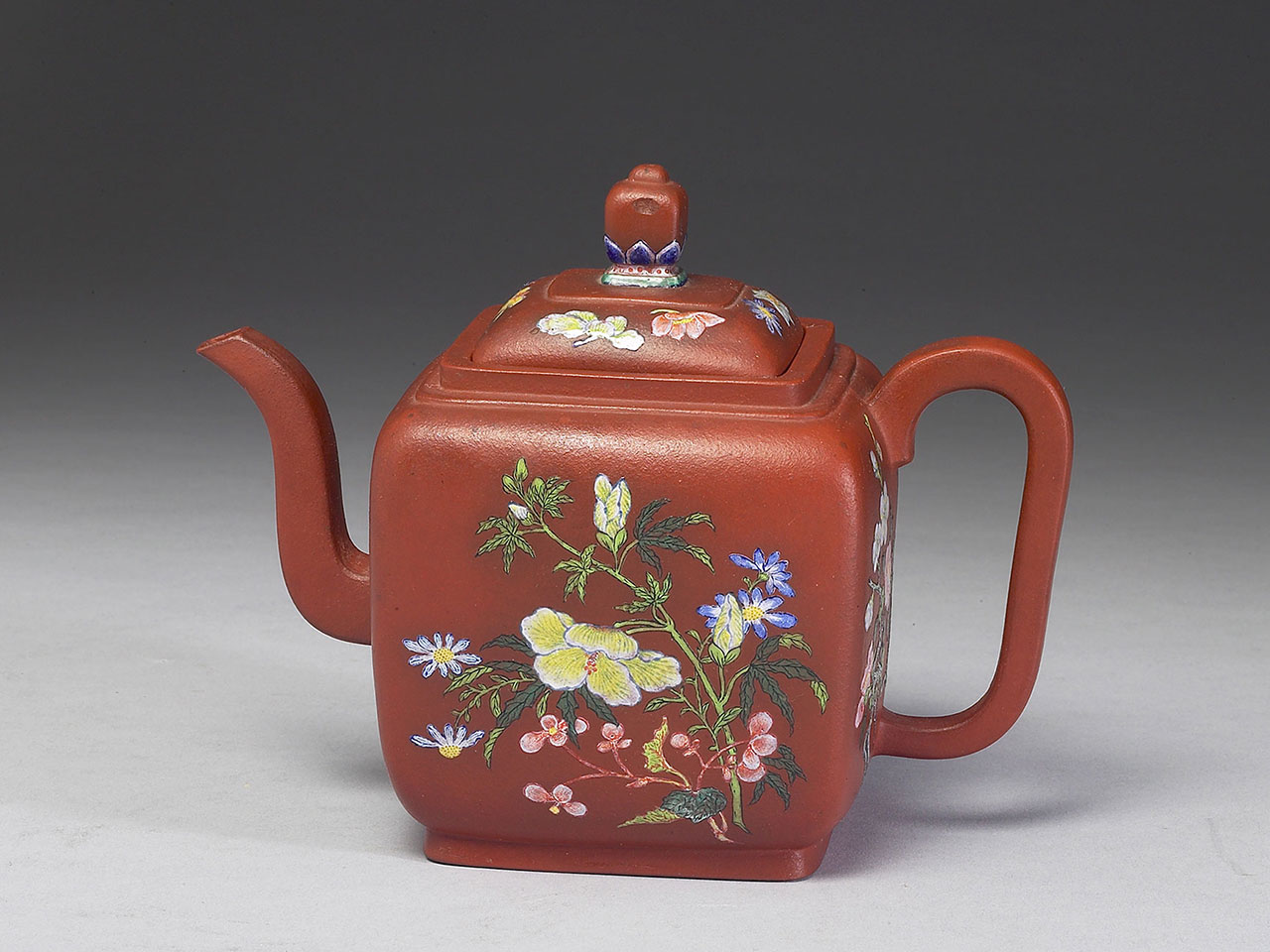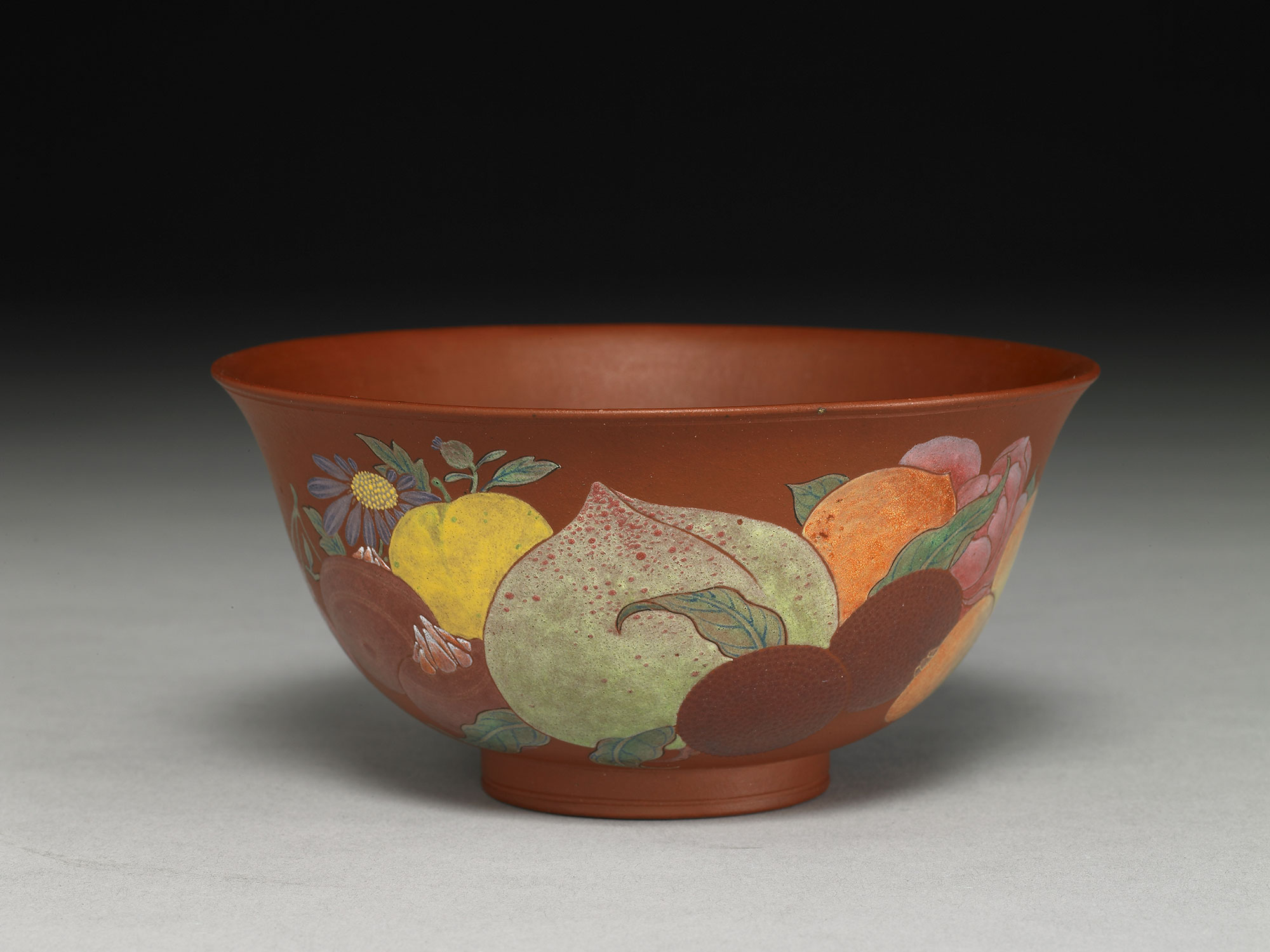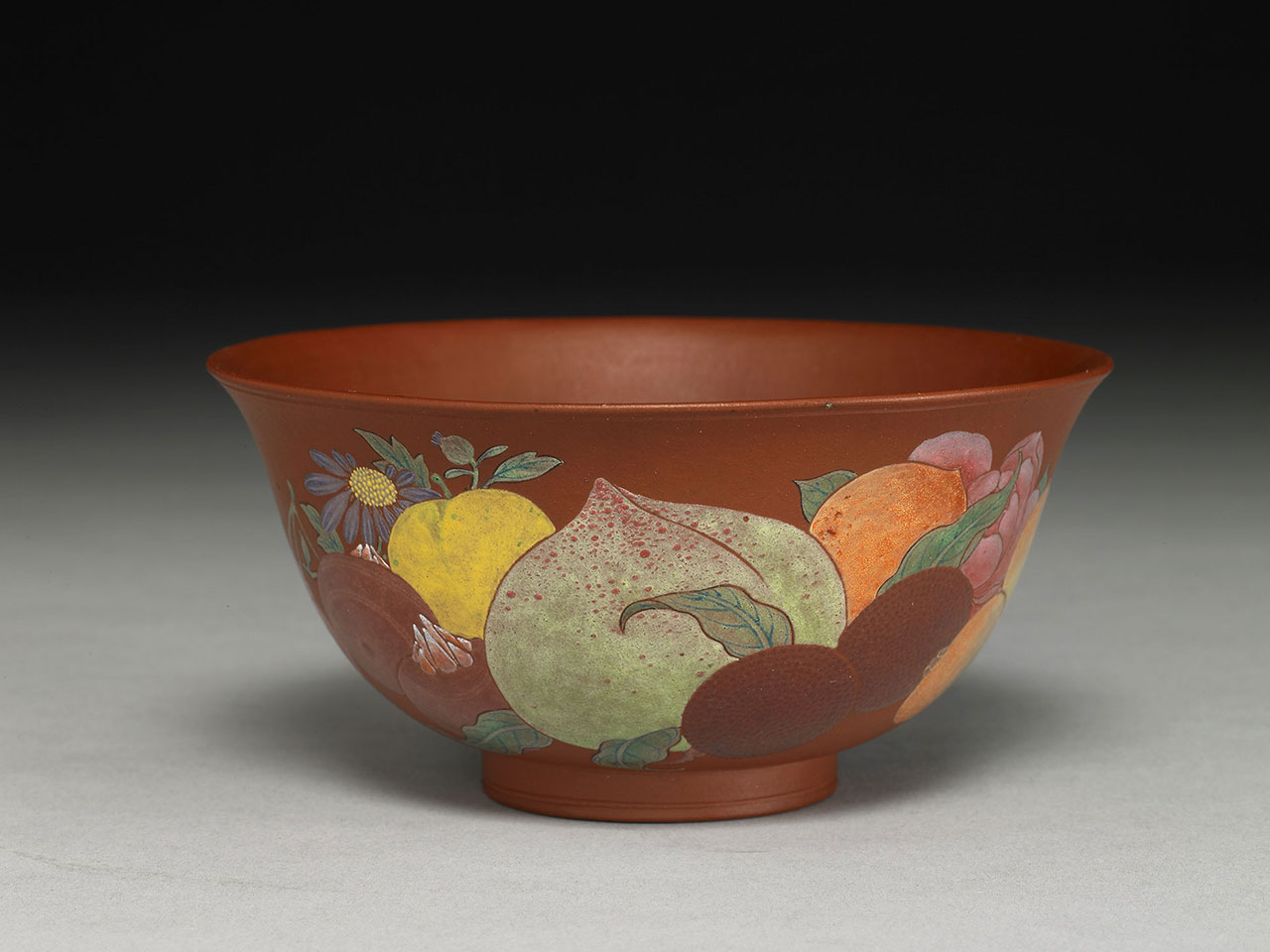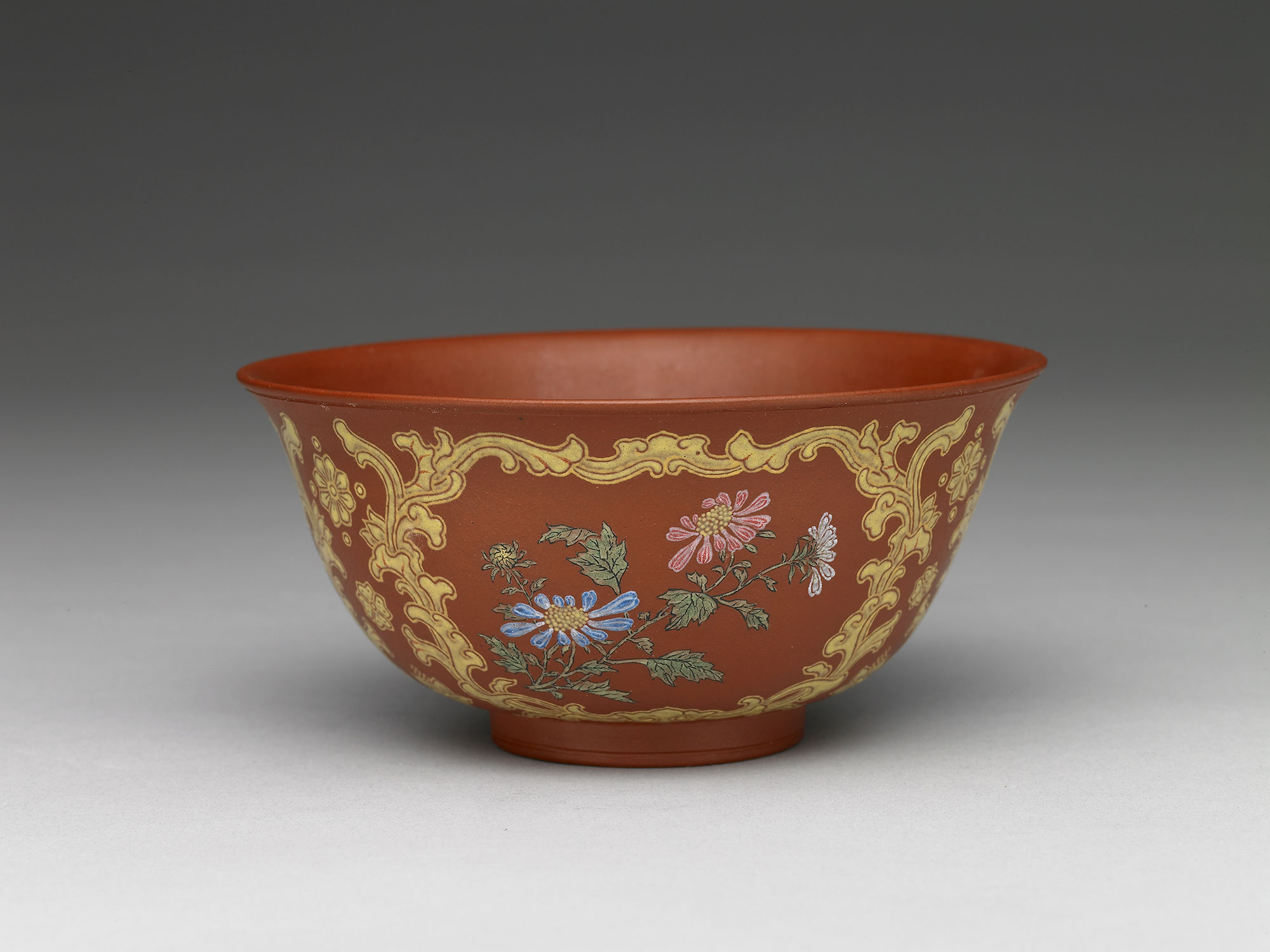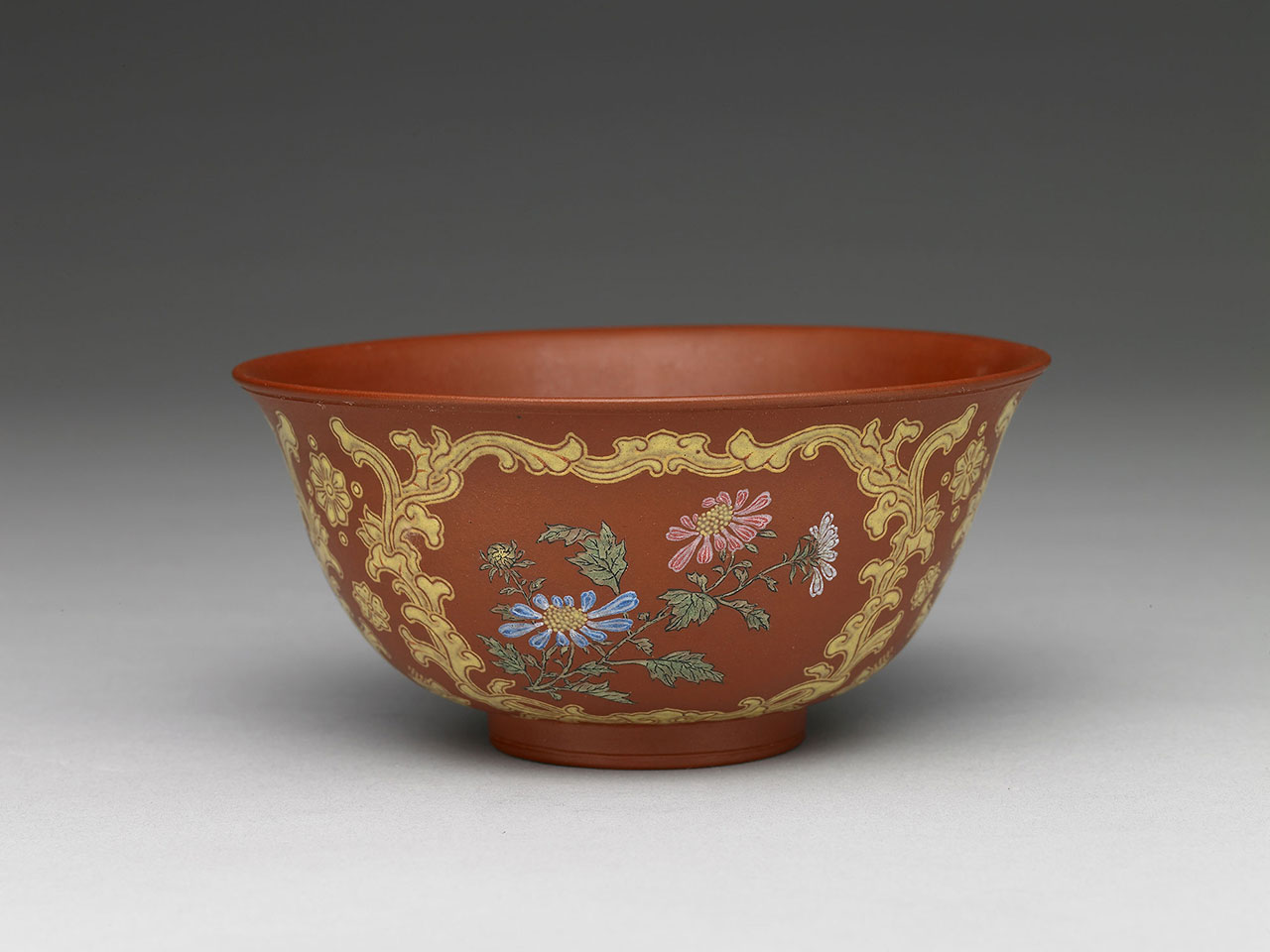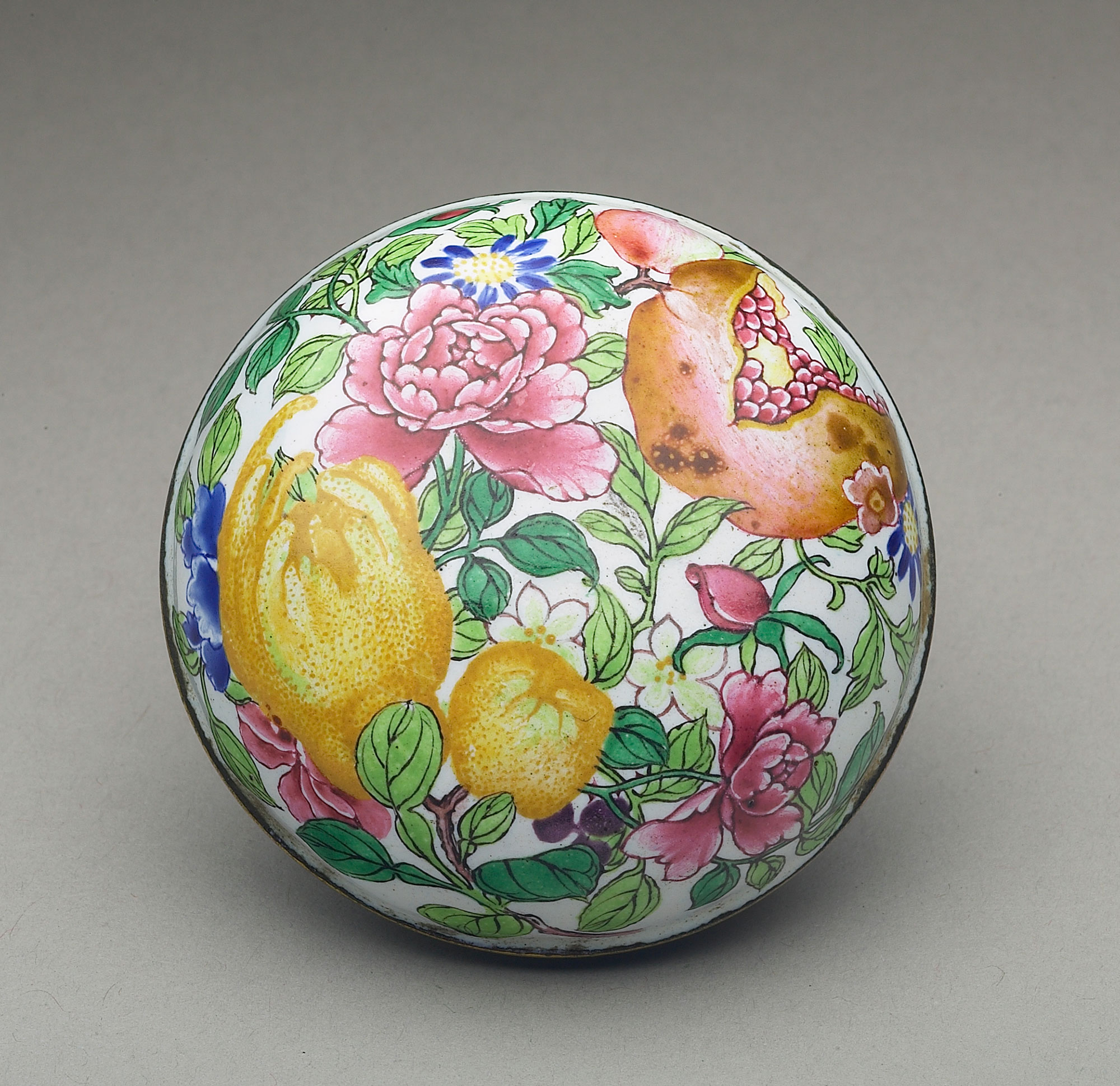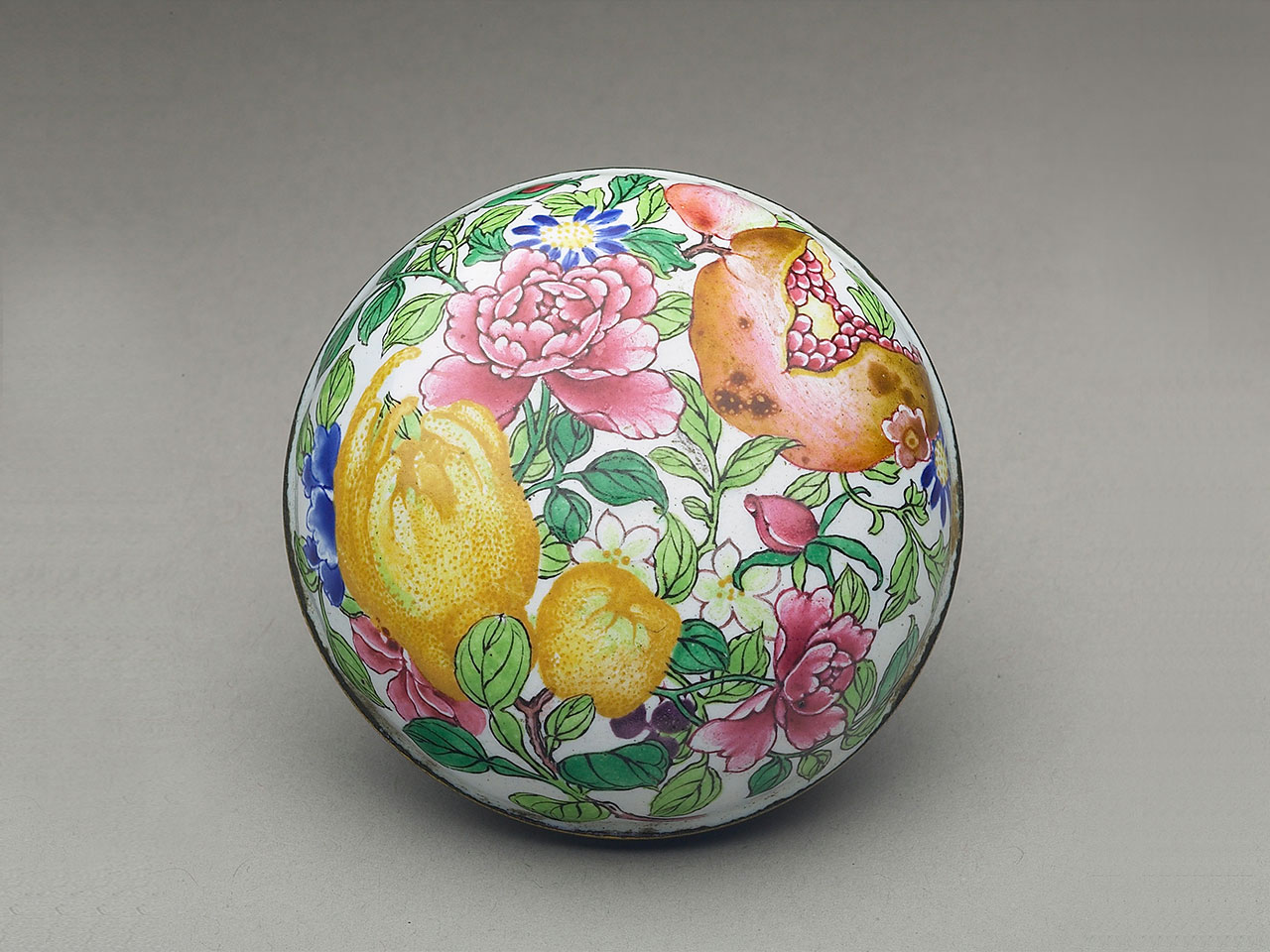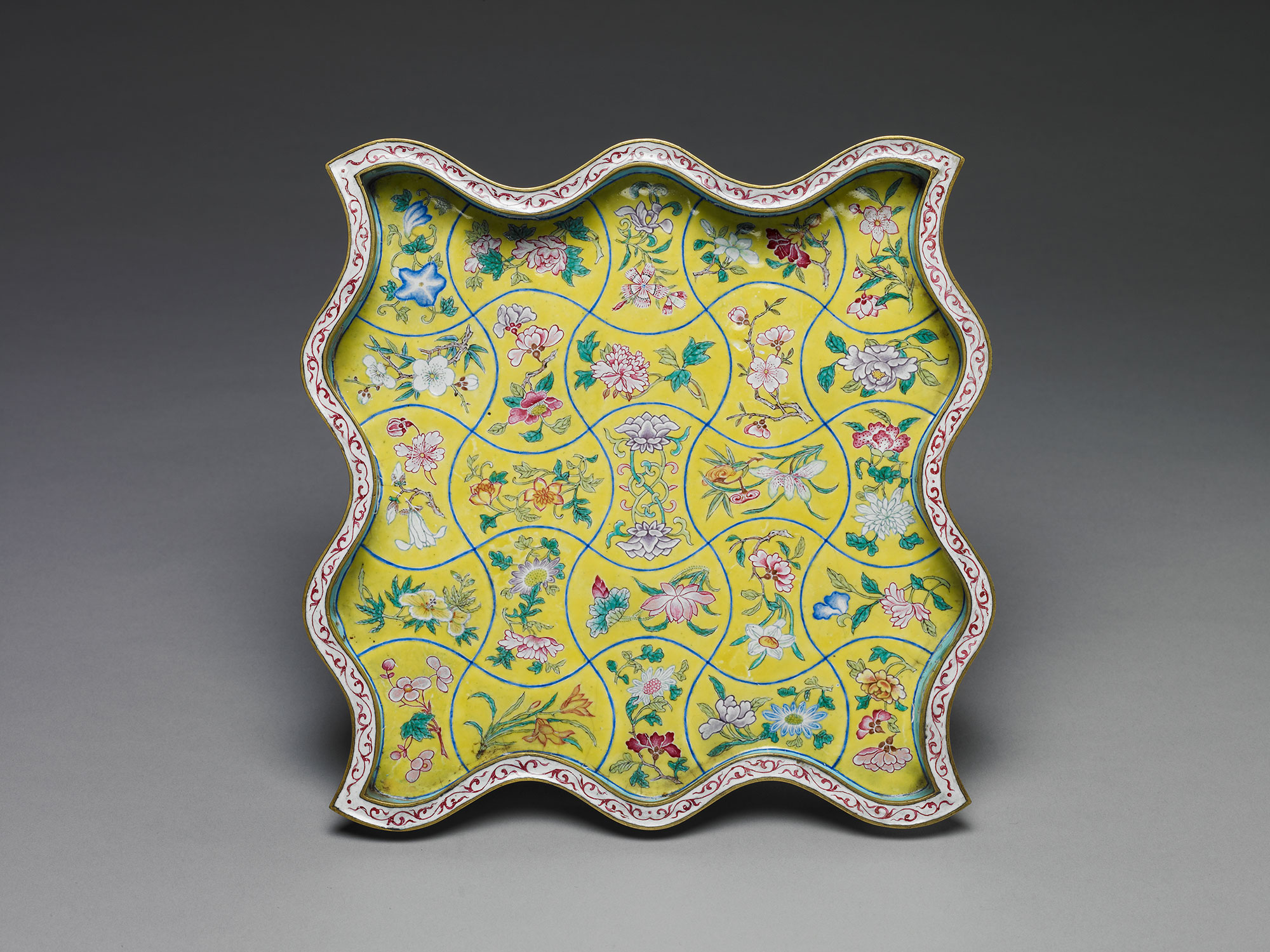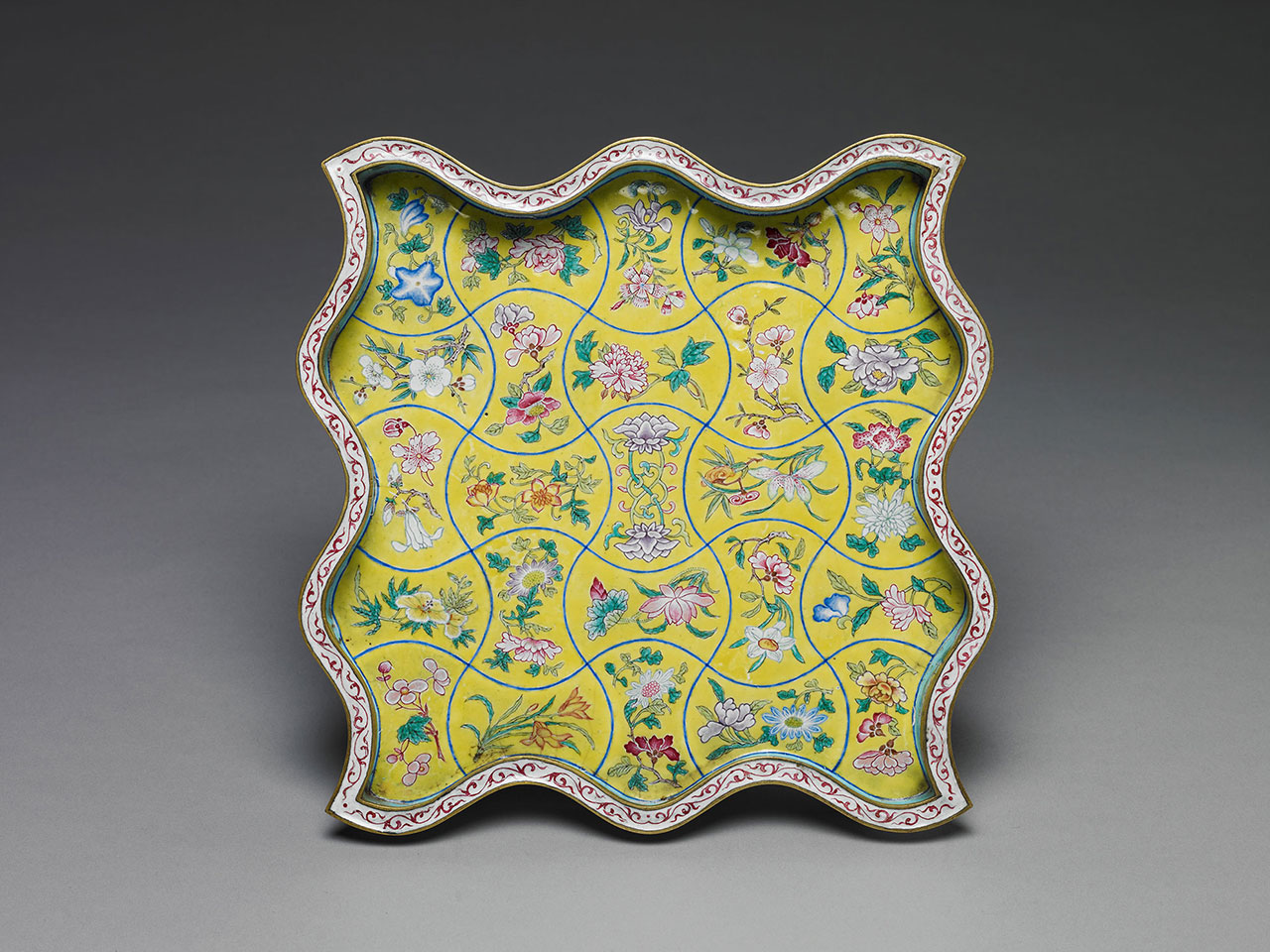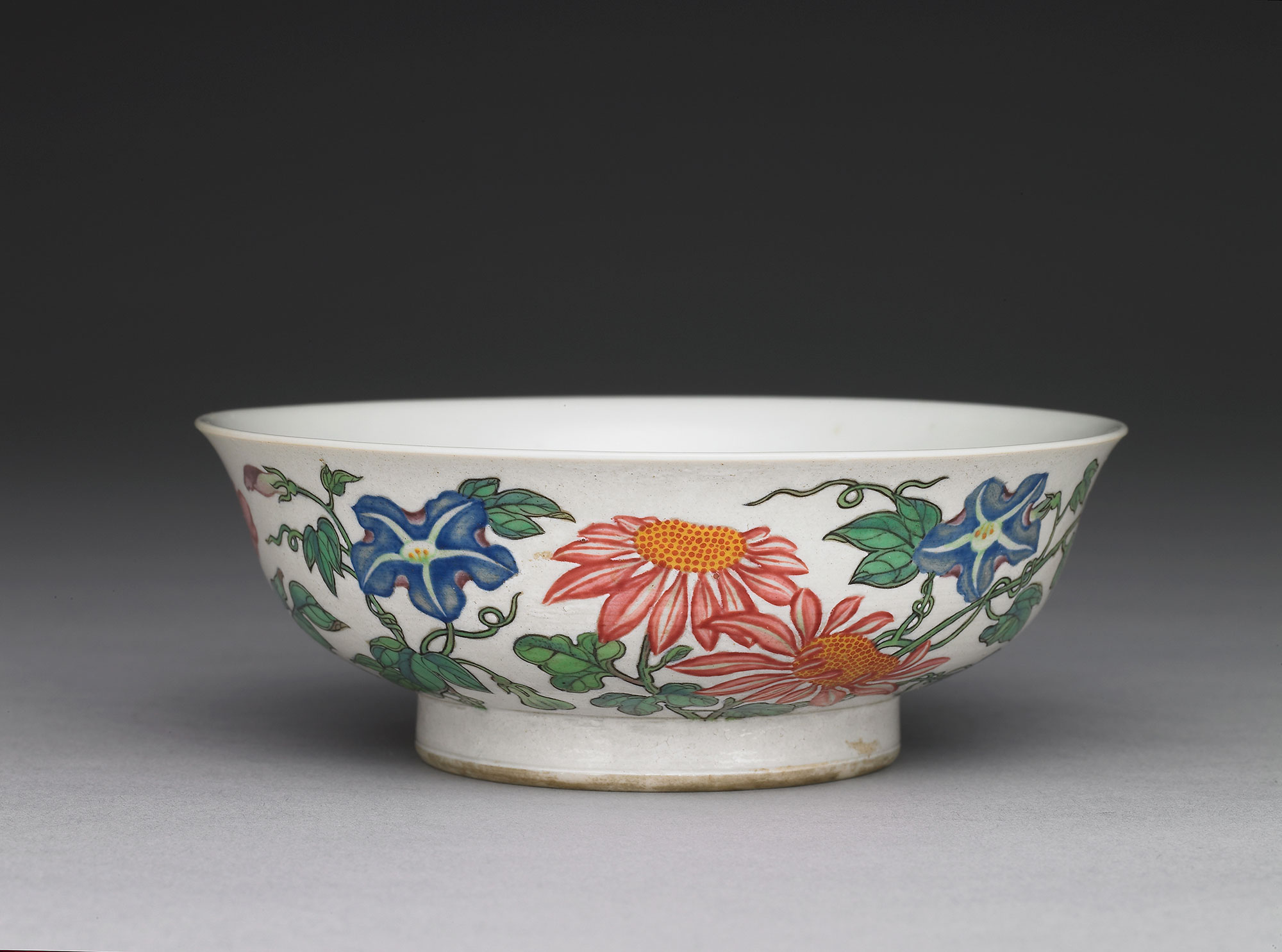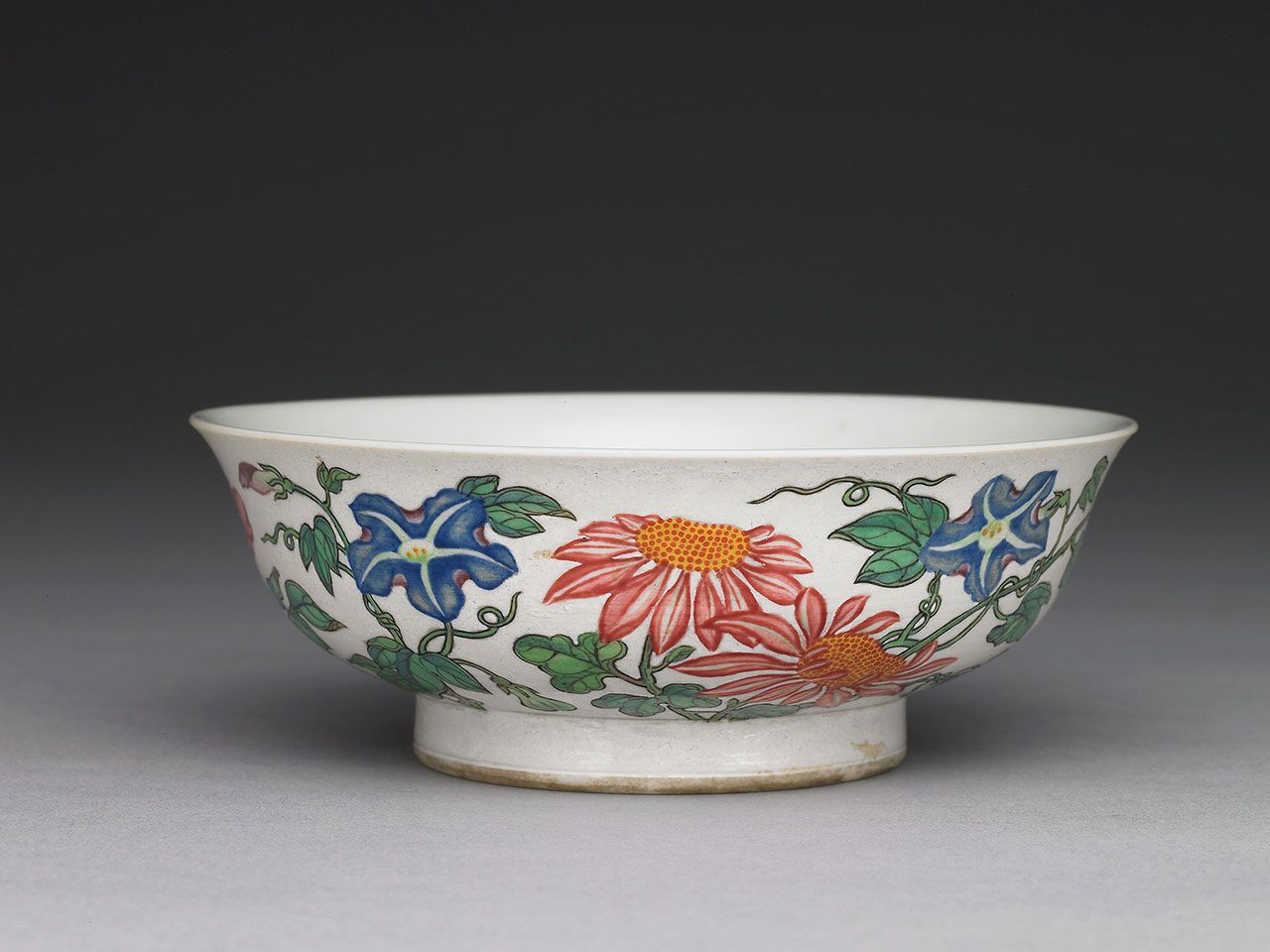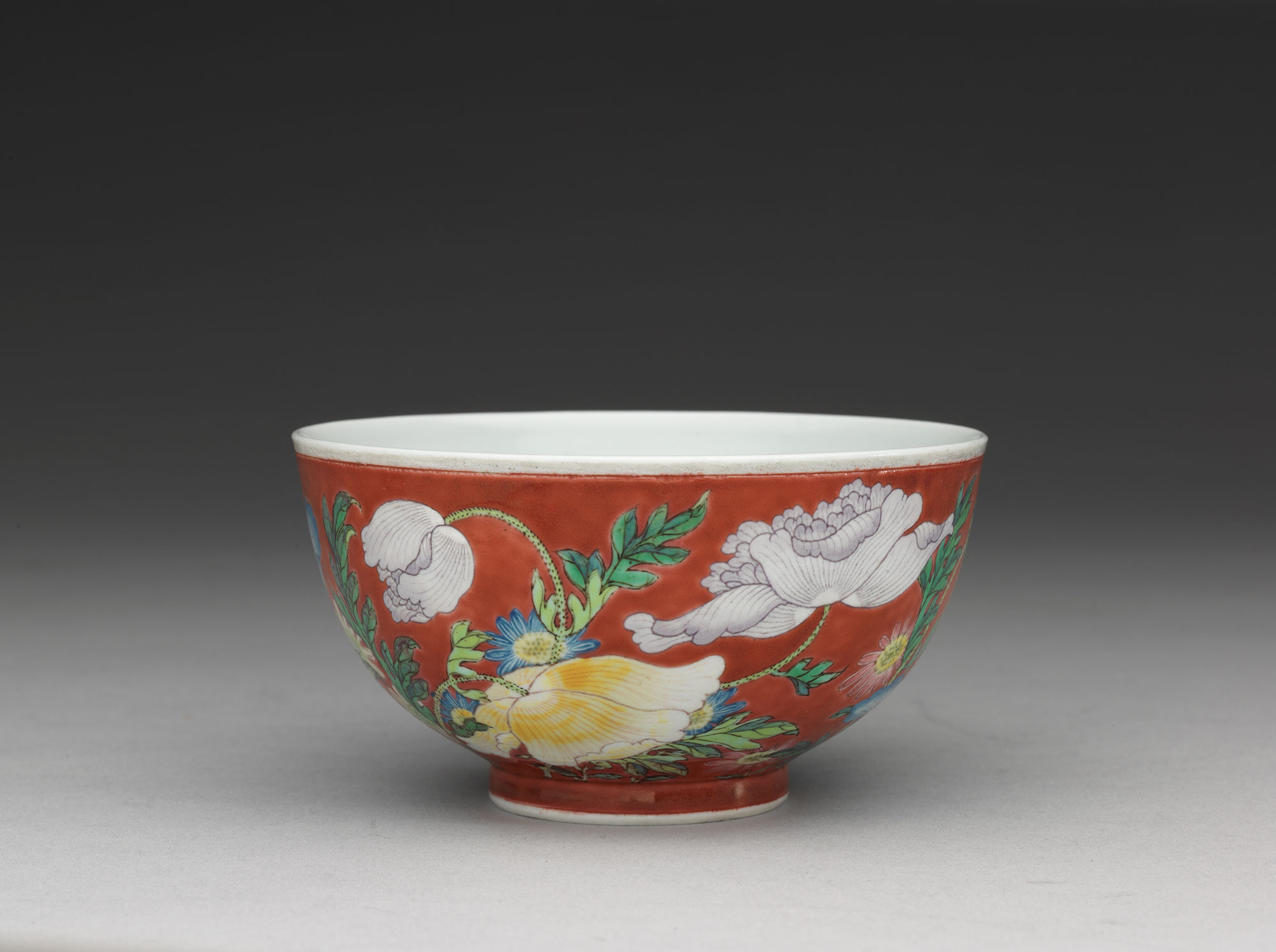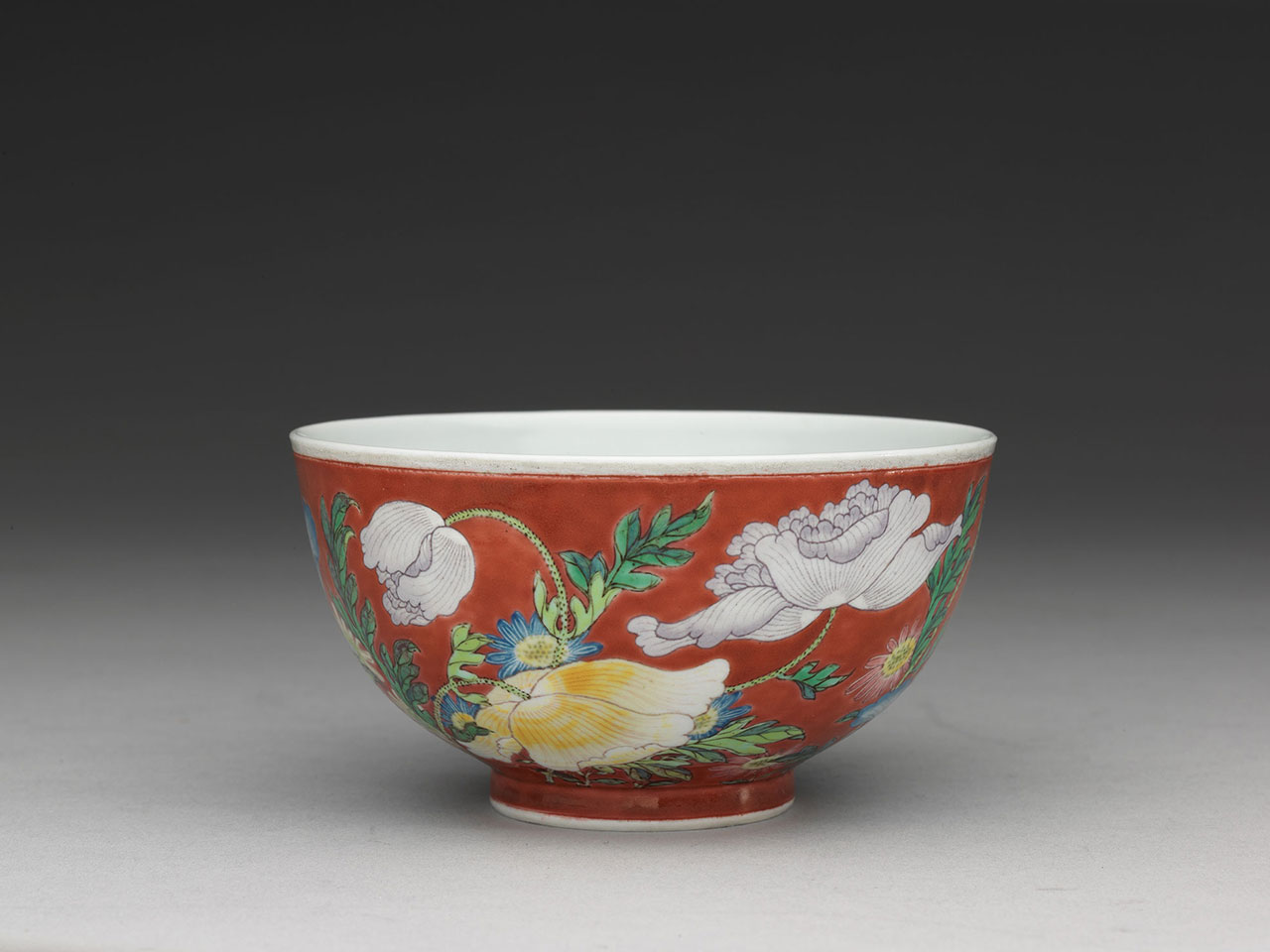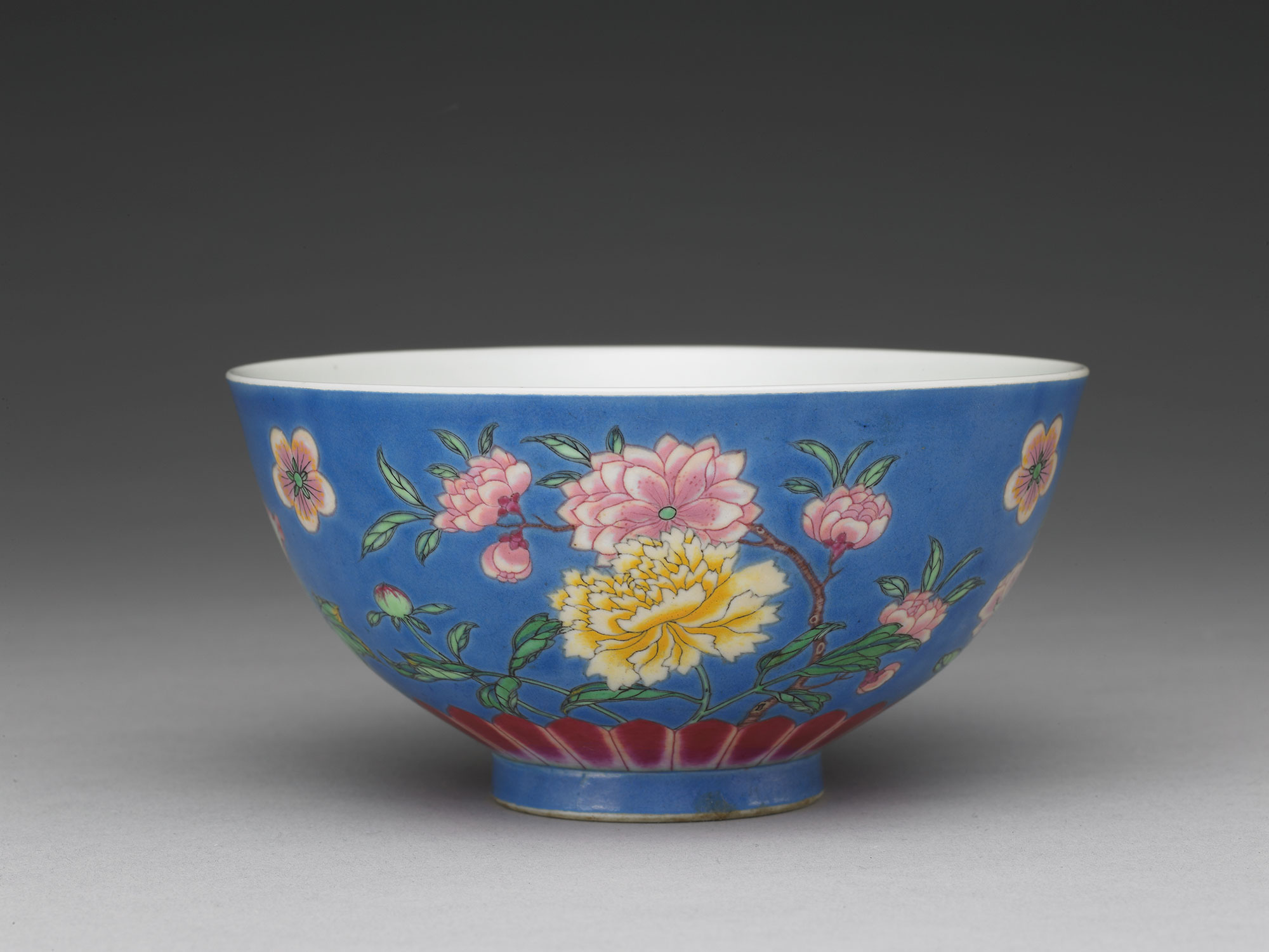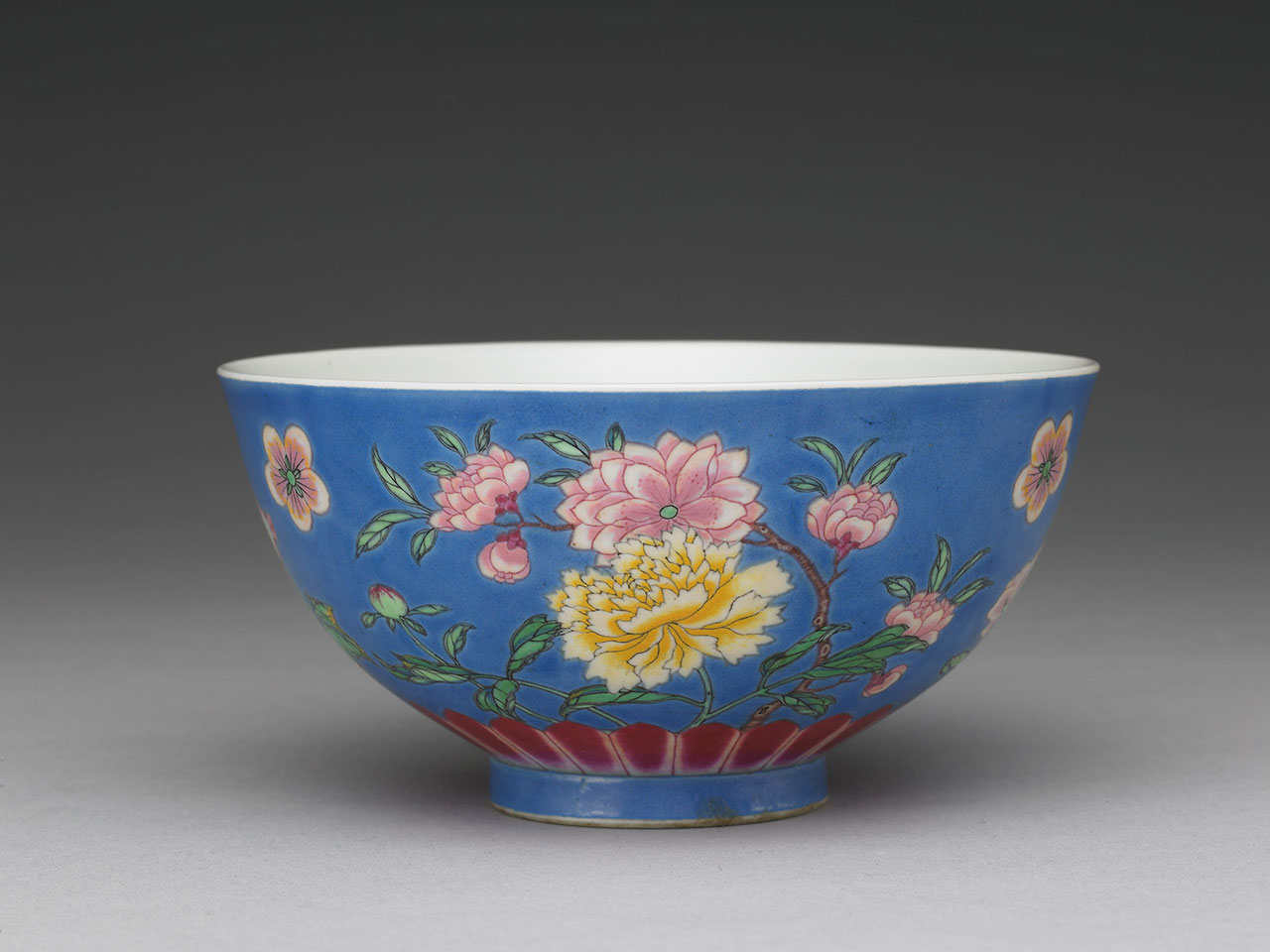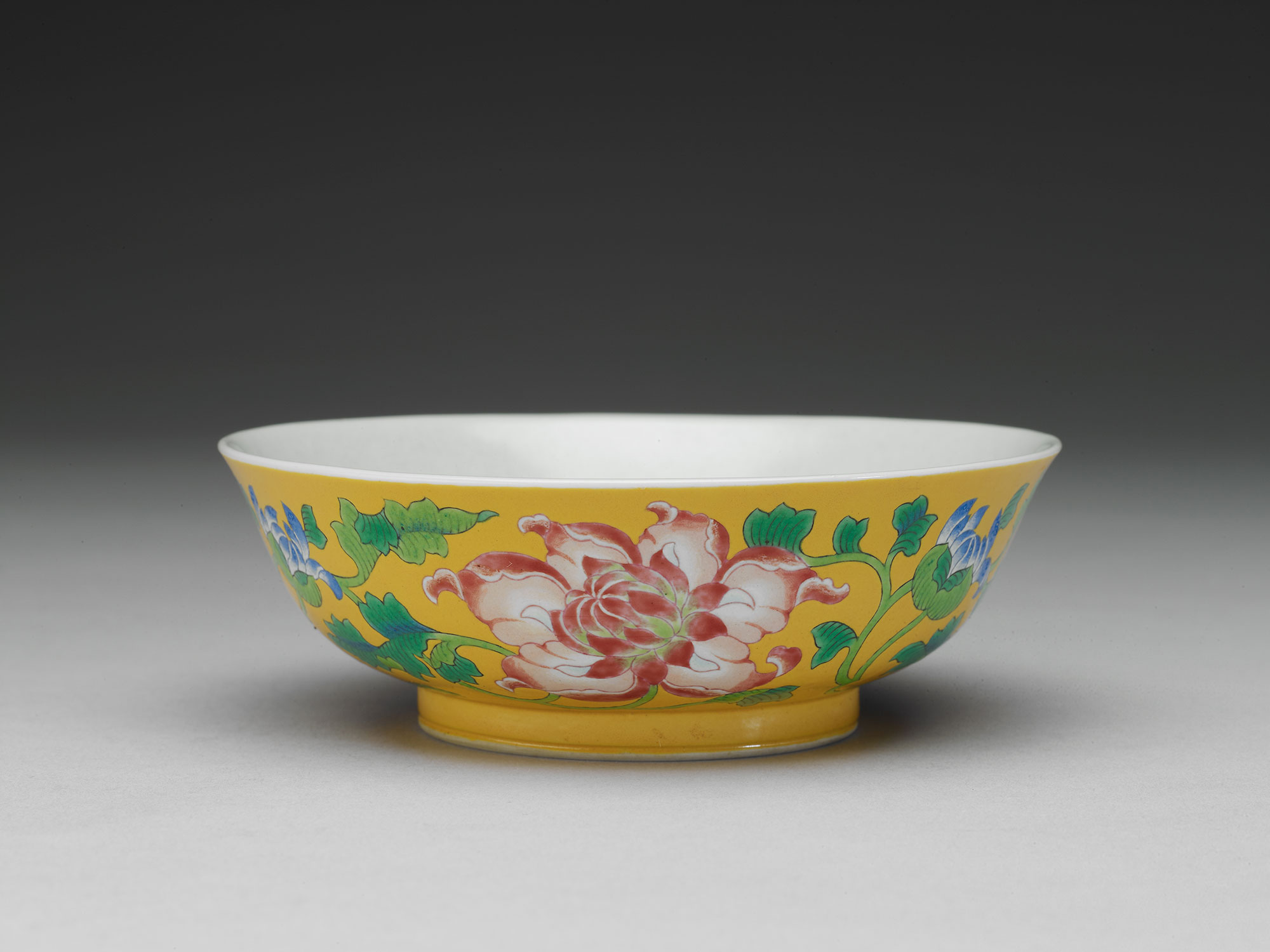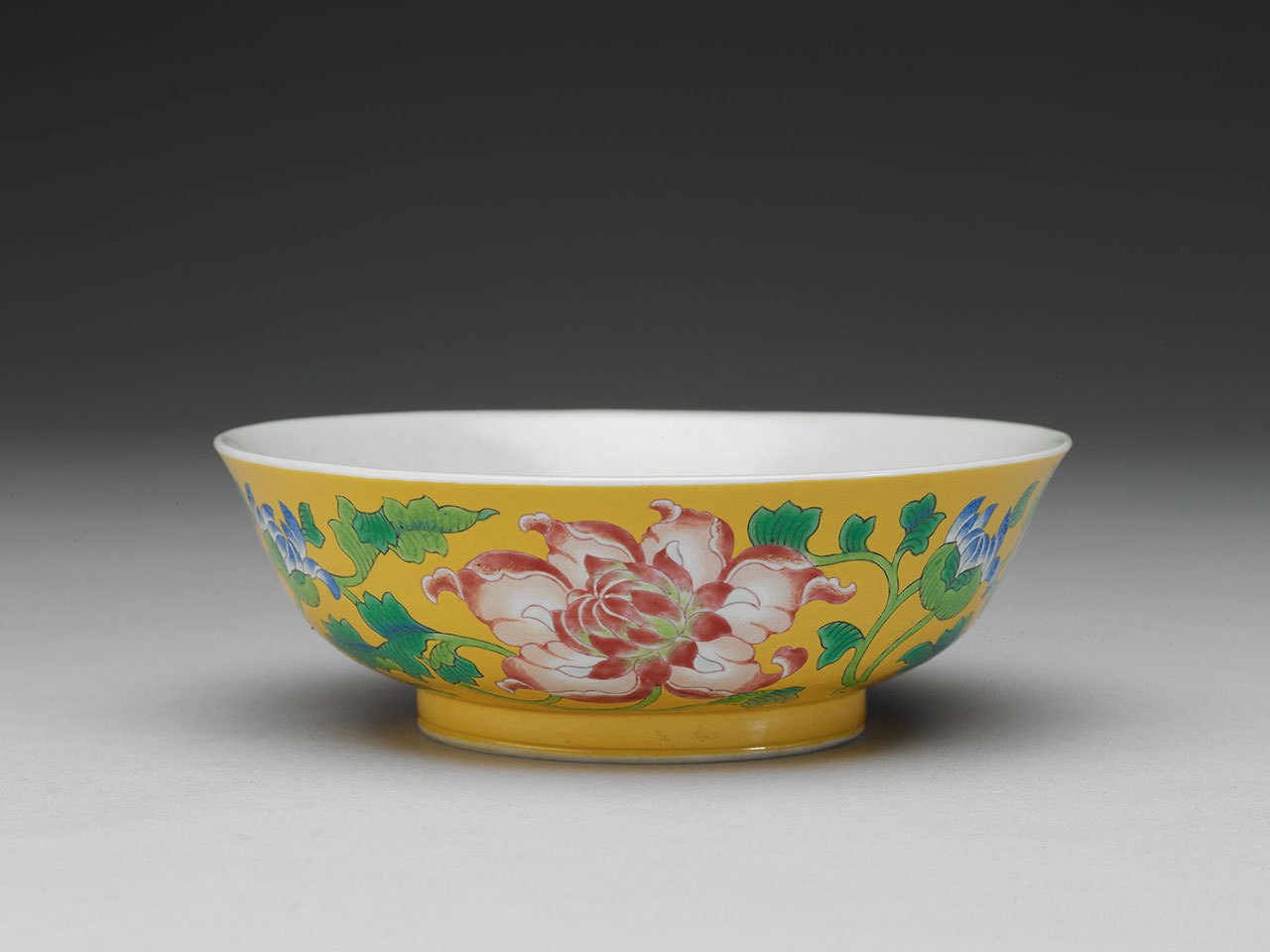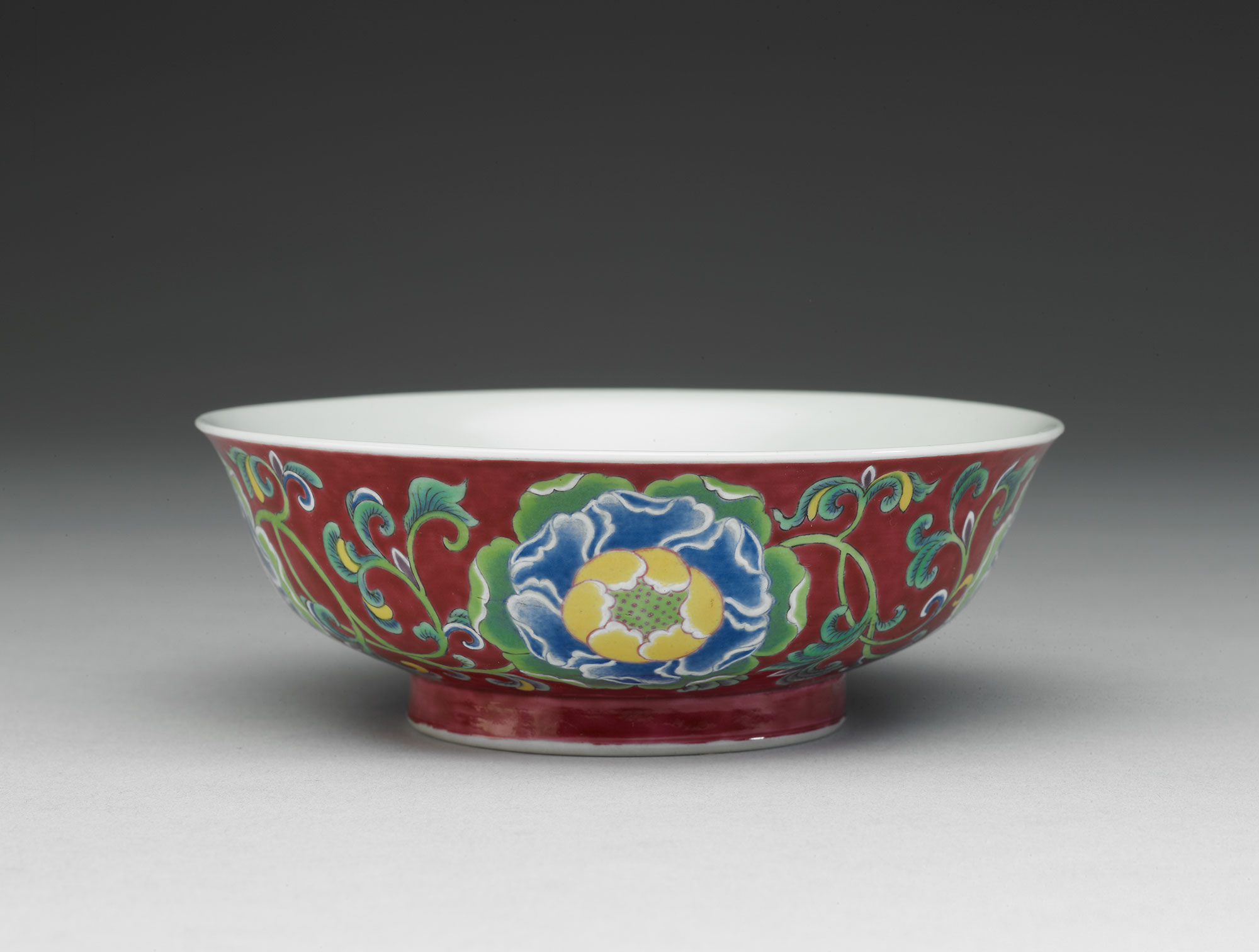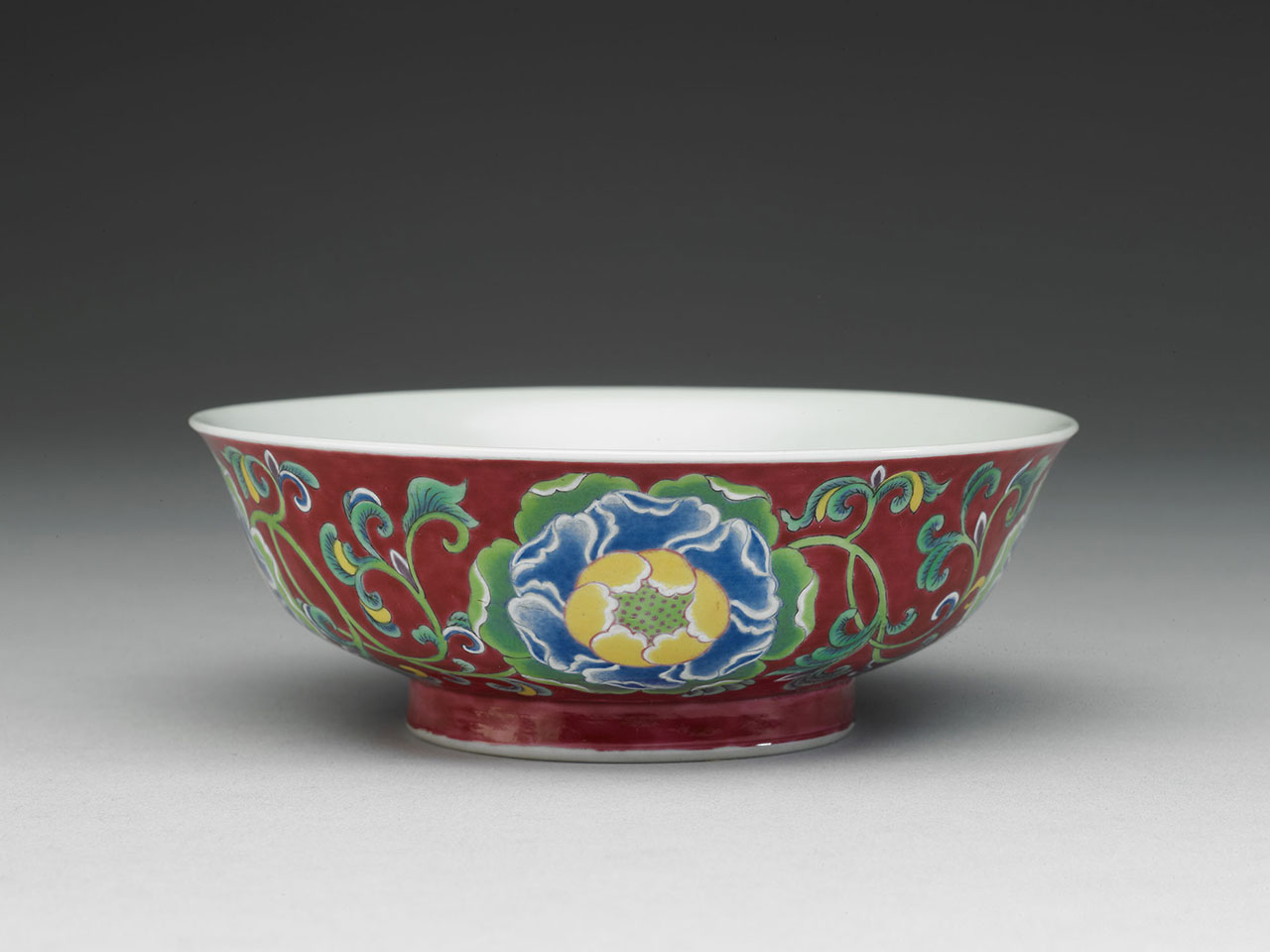Novelty from the Emperor's Experimental Workshop
The falangcai painted enamels had originated from the early 18th century. During the initial stage of development, Western missionaries and local craftsmen devoted their efforts to colouration trails and pigment processing. However, even till the end of the Kangxi reign(1622-1722), the goal was still unsuccessful, which resulted in the need for imported materials.
However, almost every test piece had included without a reign mark, and after the final firing, the "Kangxi yuzhi 康熙御製" was then labelled as recognition. Differentiated by the location of its colouring procedure, the falangcai stands for porcelains with patterns painted in falangcai pigments and reign marks written on the white base body that produced in Jingdezhen Imperial kilns, and followed by the second firing by the imperial craftsmen. In contrast porcelains having their base body and painted patterns both fired in Jingdezhen Imperial kilns, are known as the yangcai.
Style of Imperial Production
The porcelain with painted enamels that encouraged by the Kangxi Emperor, with the help and endeavour of masters from the palace, talents from the local, and also the Western missionaries, was finally produced around the 18th century. In relative to the traditional style of polychrome porcelain before the Kangxi reign, the typical porcelains with painted enamels made under enquiries of Kangxi all have the specific mark of "Imperial production by Kangxi", also with vividly bright colours and floral patterns different from the past. This section takes three perspectives of "Royal Mark", "Natural Blossom", and "Imperial Colour", inviting everyone to appreciate and to understand the style of the imperial porcelain with painted enamels by the Kangxi Emperor.
The marks of "Imperial production by Kangxi" on the bottoms of these three pieces clearly show the style of imperial porcelain.
Royal Mark
From the 15th century, potters gradually began to take the reign year of the emperor as the mark for official wares. Especially when the mark became the regulation, we can take the examples from each generation to generally conclude the typical style in the order of starting from the dynasty, following by the imperial reign, and finishing with the year. For instance, the porcelains of the Kangxi reign produced from Jingdezhen were marked with " da qing kangxi nien zhi 大清康熙年製", or occasionally in short of " kangxi nien zhi 康熙年製". In contrary, porcelains with painted enamels whose marks were done in the imperial workshop were marked with " yu zhi 御製". For the word " yu 御" represents the emperor, thus it became the royal mark that enriched with the characteristic of an era.
Natural Blossom
Most of the porcelains with painted enamels from the Kangxi reign are decorated with floral patterns; some of them are recognizable stylized flowers, but also with extremely graphic patterns. What worth mentioning is, the blue chrysanthemum that interweaving in between the stylized flowers, and occasionally appearing among pink blossoms. Although not being the main character, but it is a small motif that frequently seen on the porcelains with painted enamels from the Kangxi reign. If we compare this finding to the "Wild Chrysanthemum" painted by Jiang Tingxi (1669-1732) with imperial remark in the 44th year of Kangxi reign (1705), the emperor stated that "mountain blossom and wild chrysanthemum adoring fresh wind, lighting from the North Great Wall presents the maple trees on the hill" to praise the chrysanthemum he encountered while royal progress beyond the Great Wall, thus the intriguing story of the emperor transforming the memories from the journey into the imperial style is revealed.
Please pay attention to the blue chrysanthemums among the red and purple flowers. They actually record the Kangxi Emperor's memories of his journey beyond the Great Wall!
Imperial Colour
The imperial workshop in the Kangxi reign used mostly Western enamel pigments. In the 6th year of the Yongzheng reign (1728), the craftsmen had figured out the method. Ever since, the combination of local production and imported material has become regular. To trace back to the pigments and colour primarily encountered by the imperial craftsmen, besides the rouge colour produced locally, the vivid colour range includes the yellow, green, blue, red, purple, black, and also other variations emerged from mixtures of colours. All brilliant colours can be regarded as the imperial colour that second to none in the world of the 18th century.
